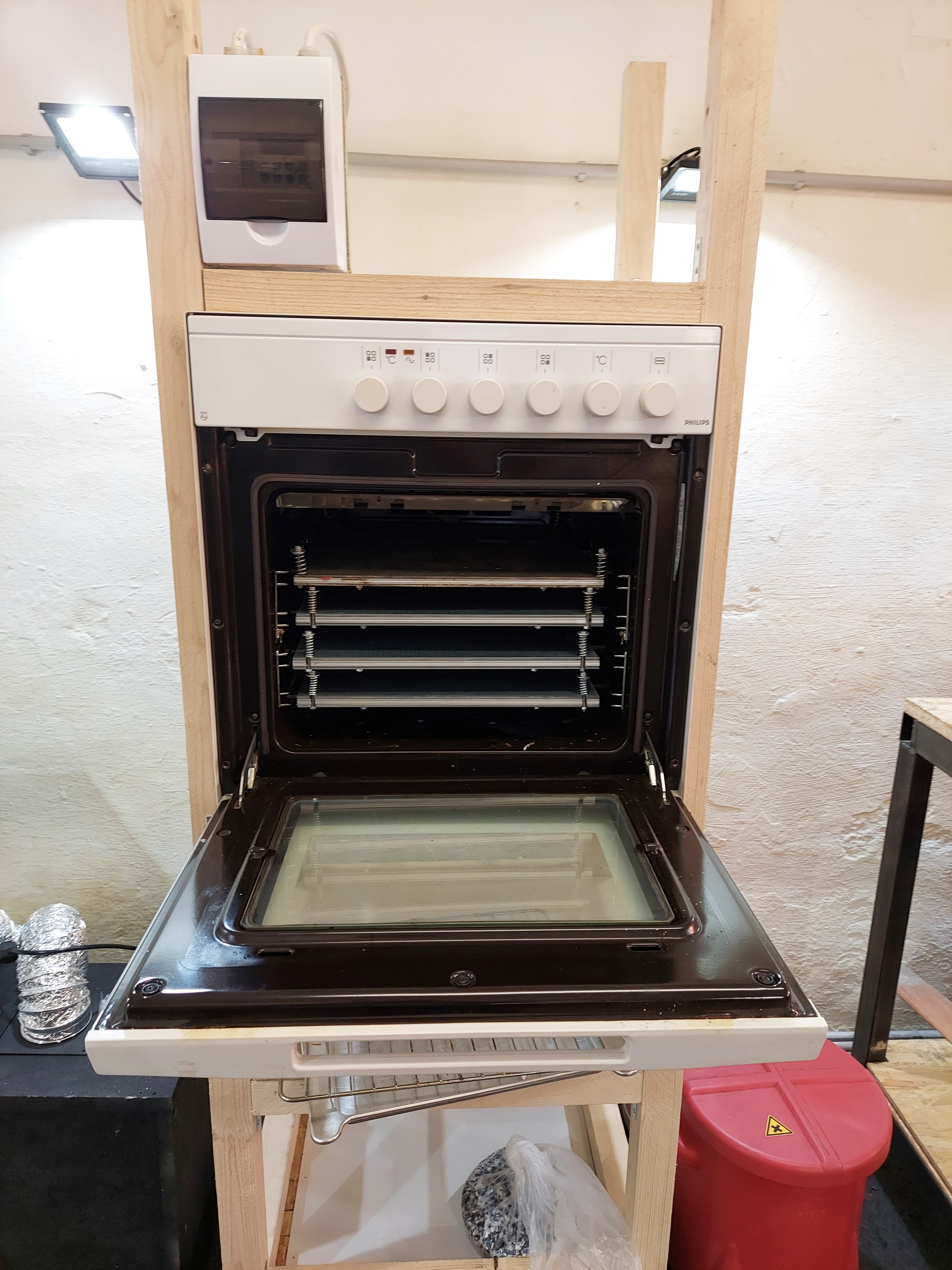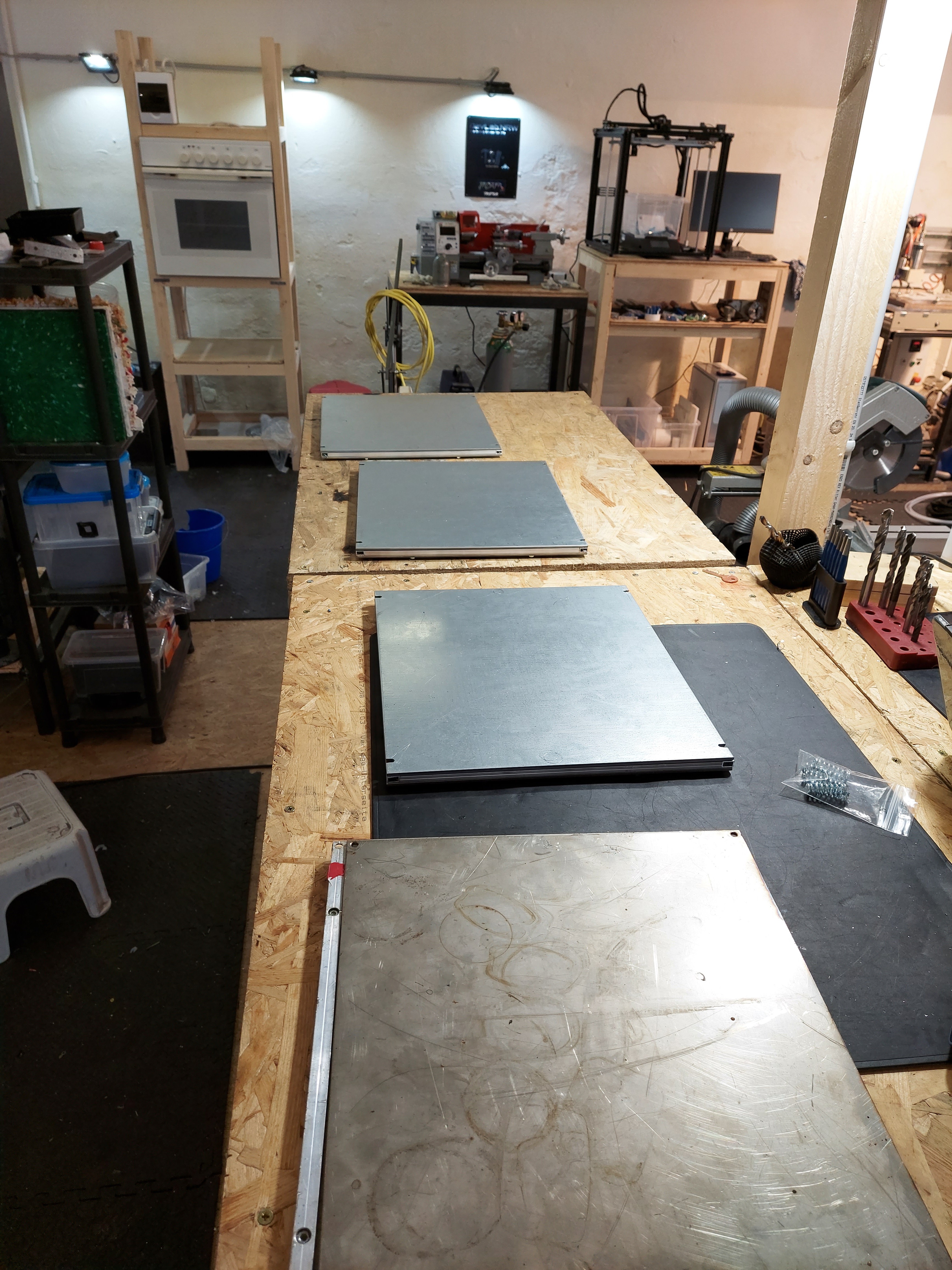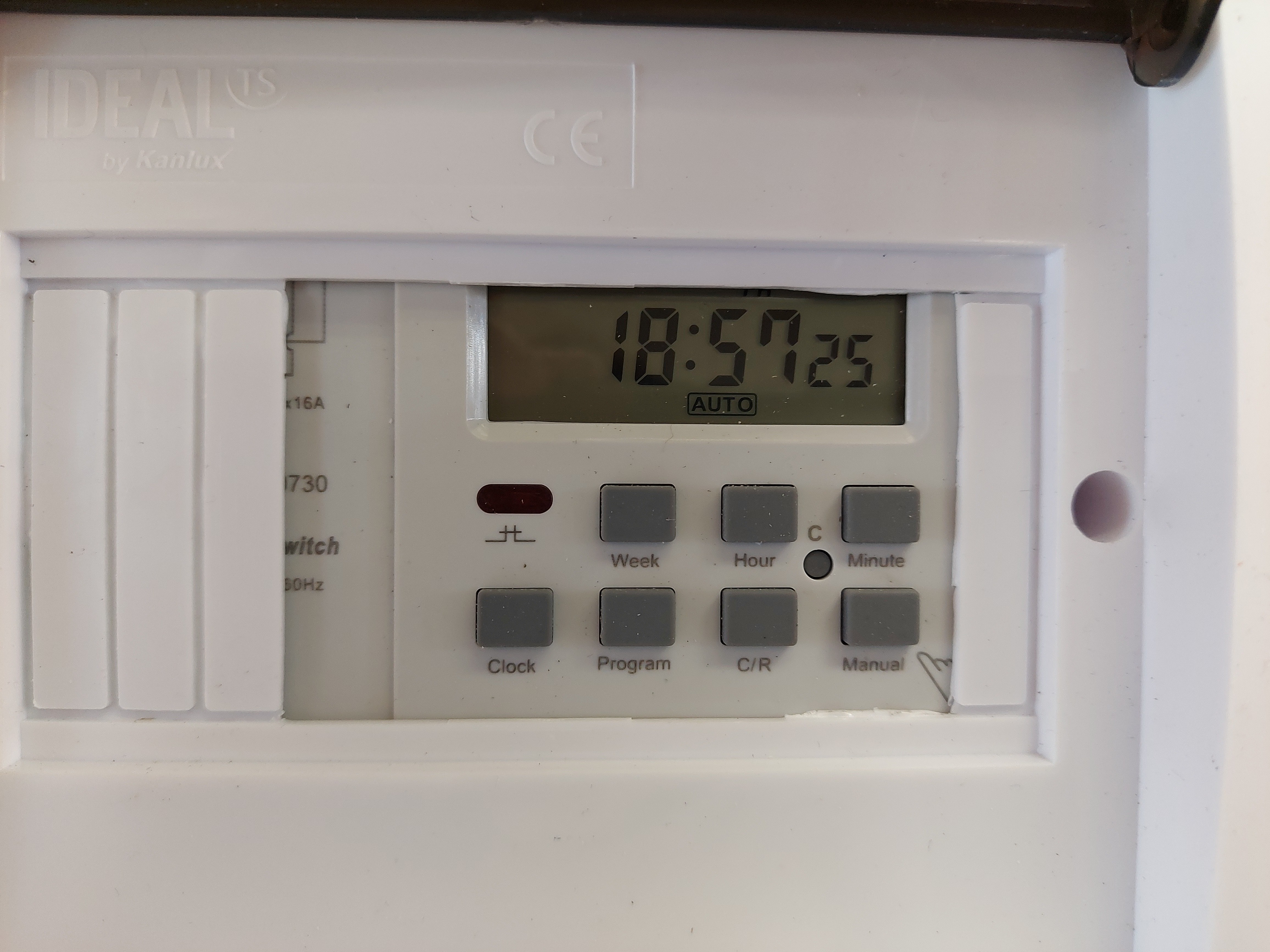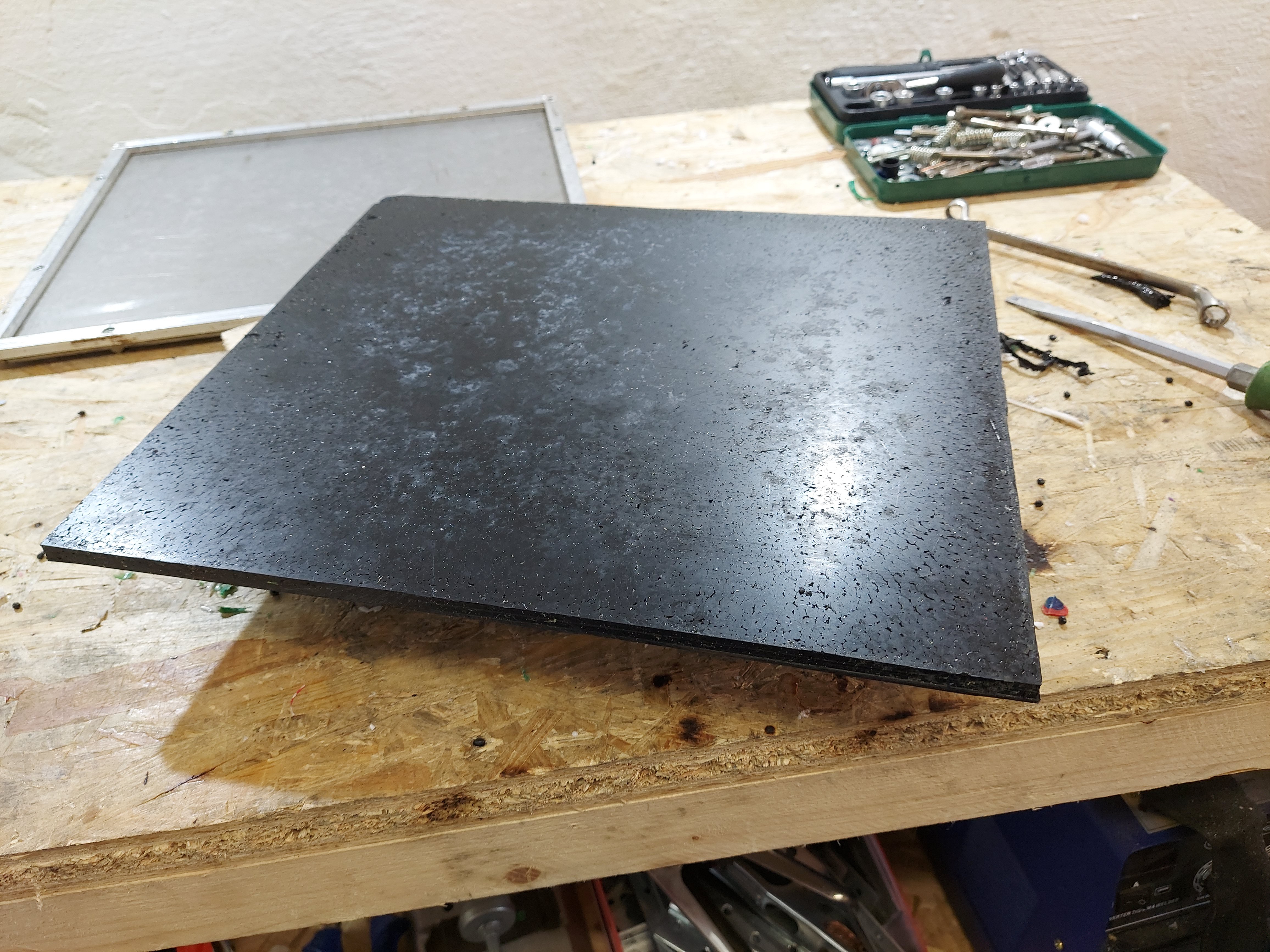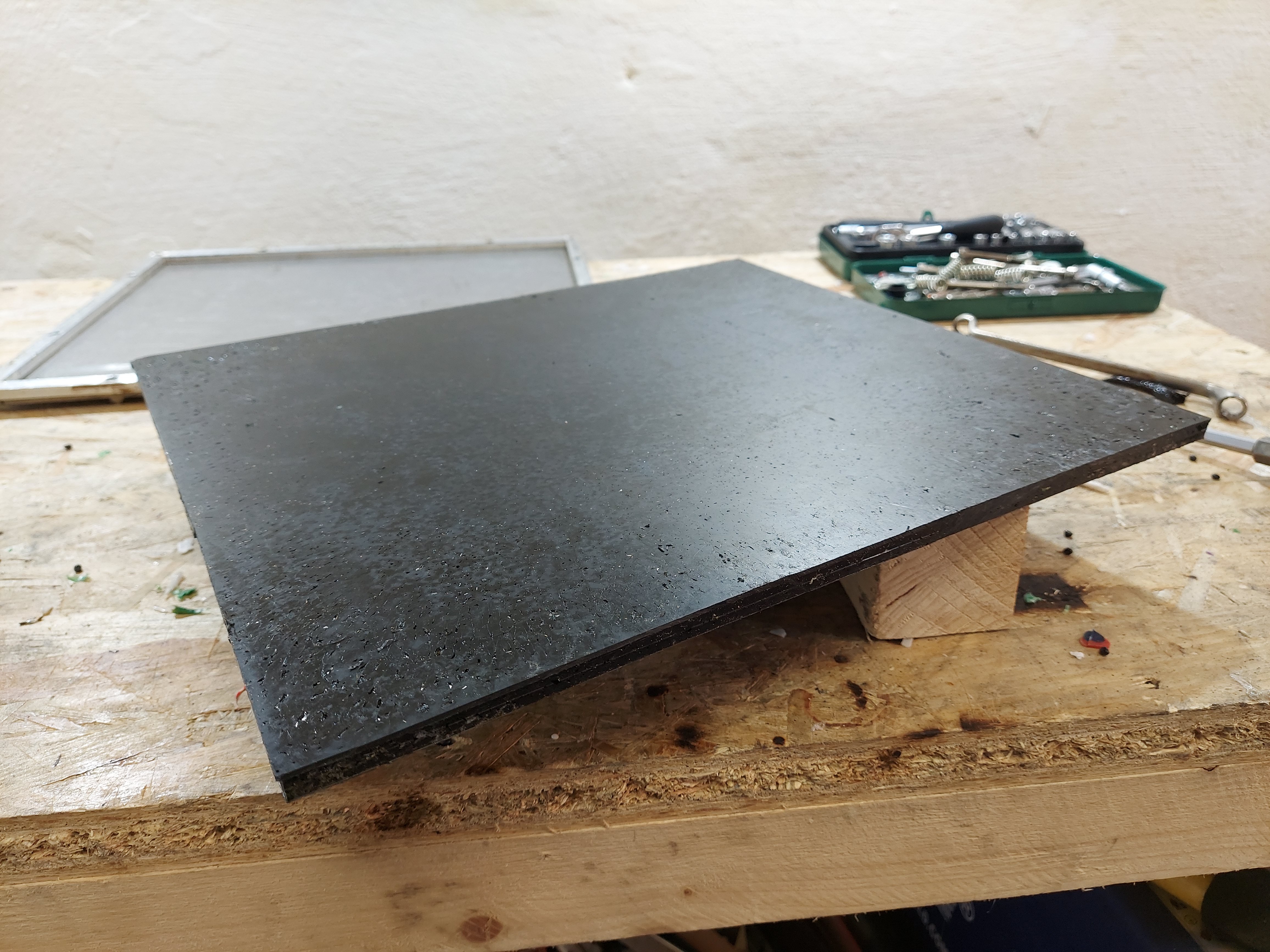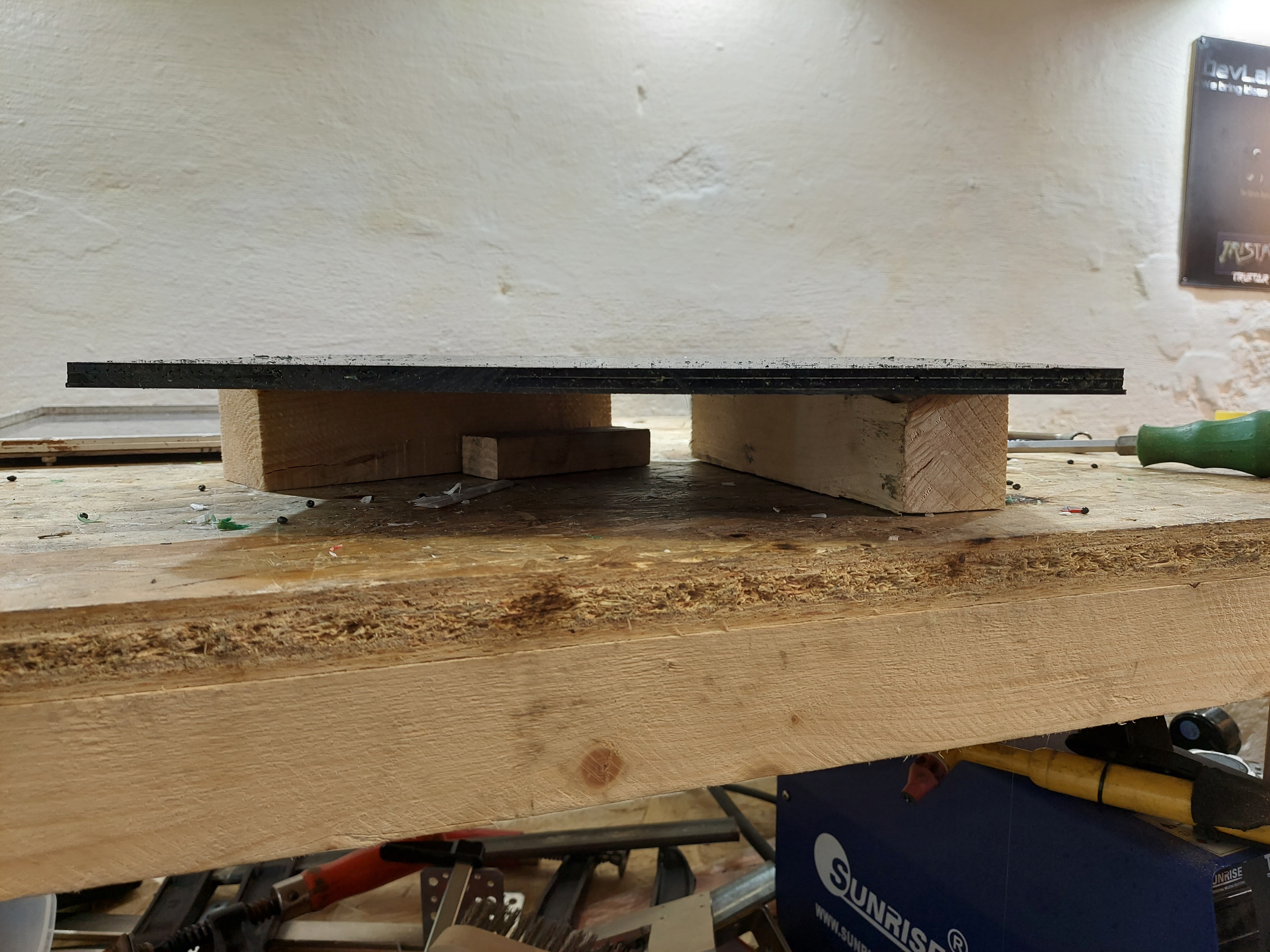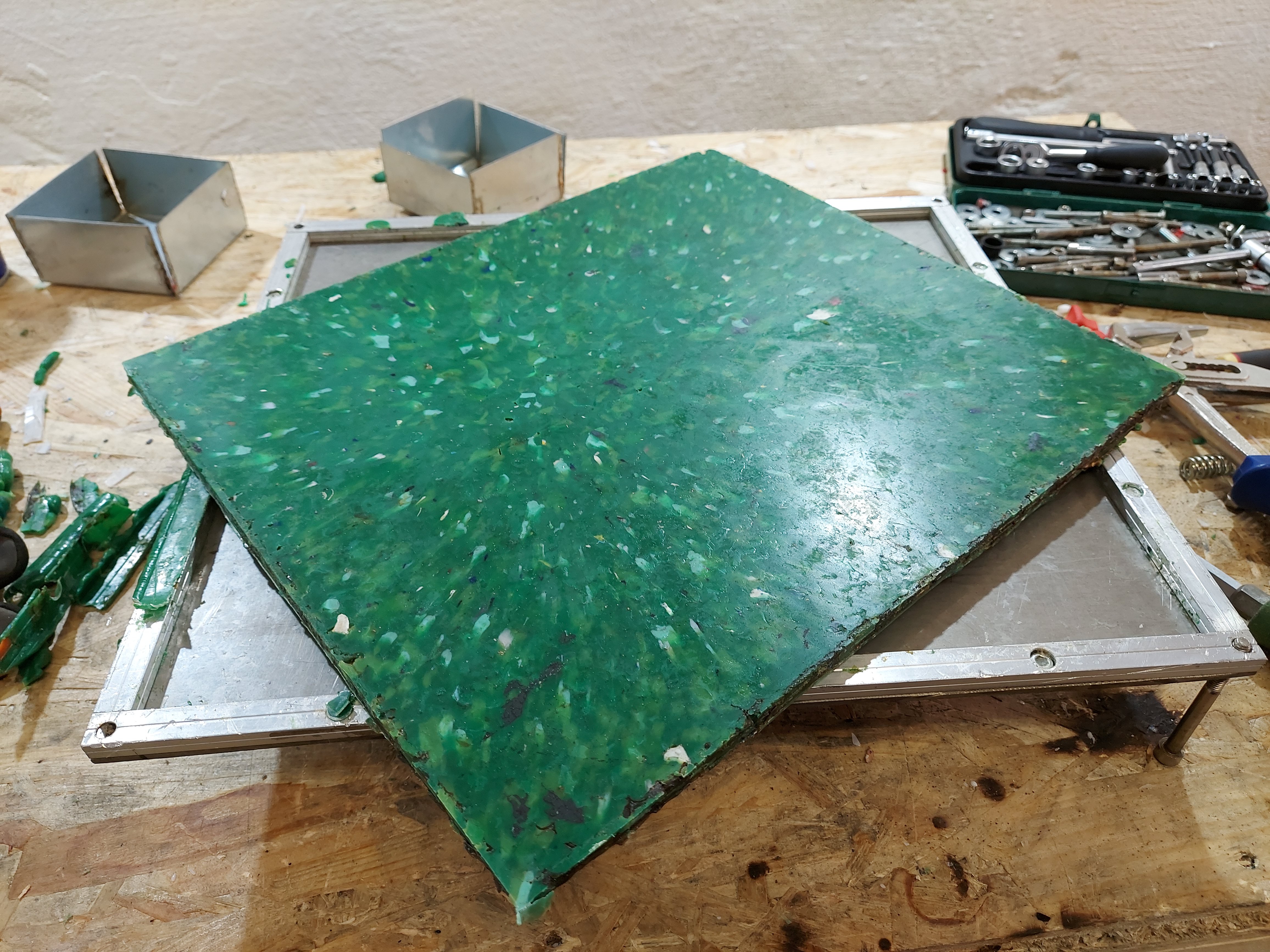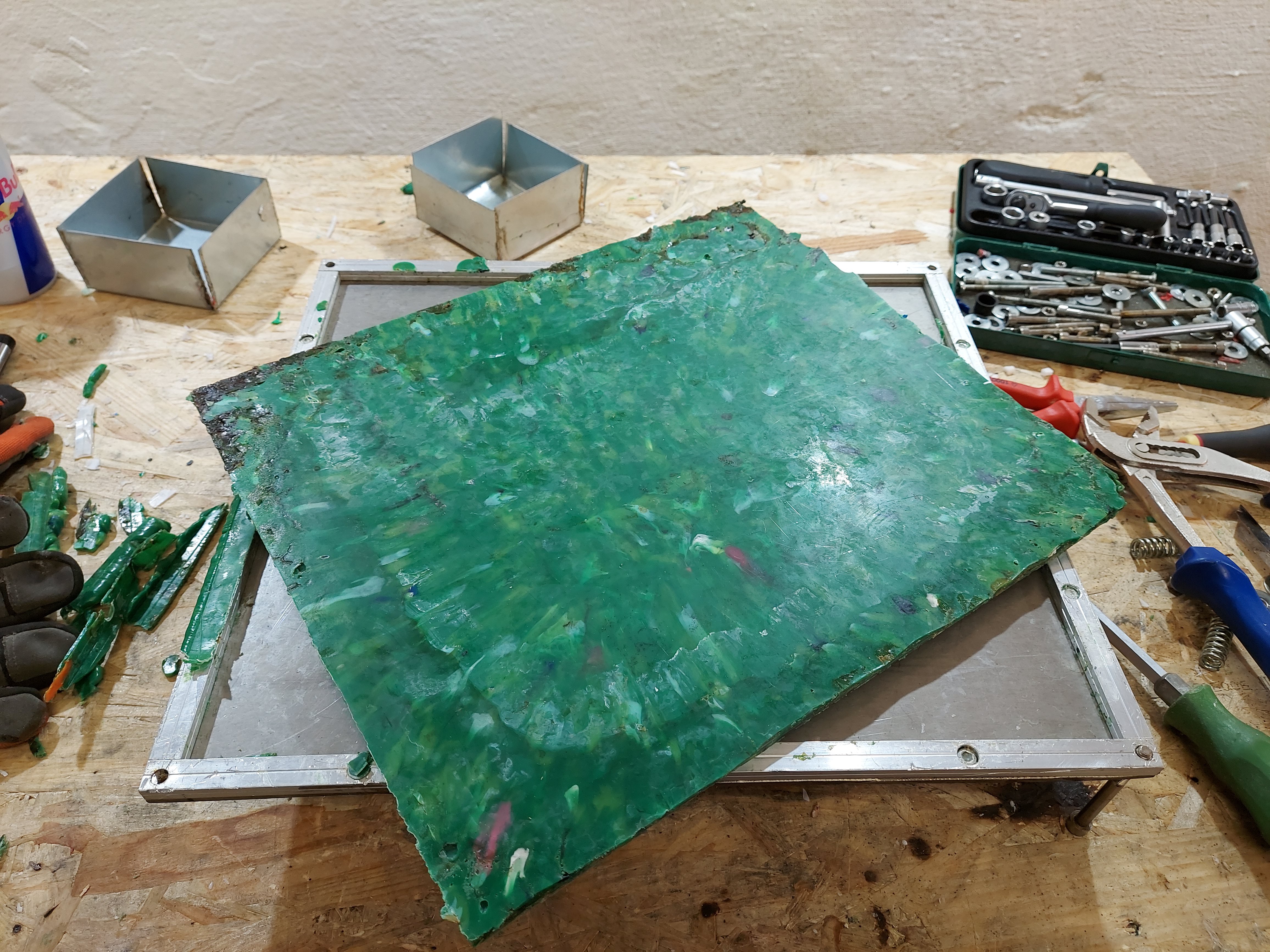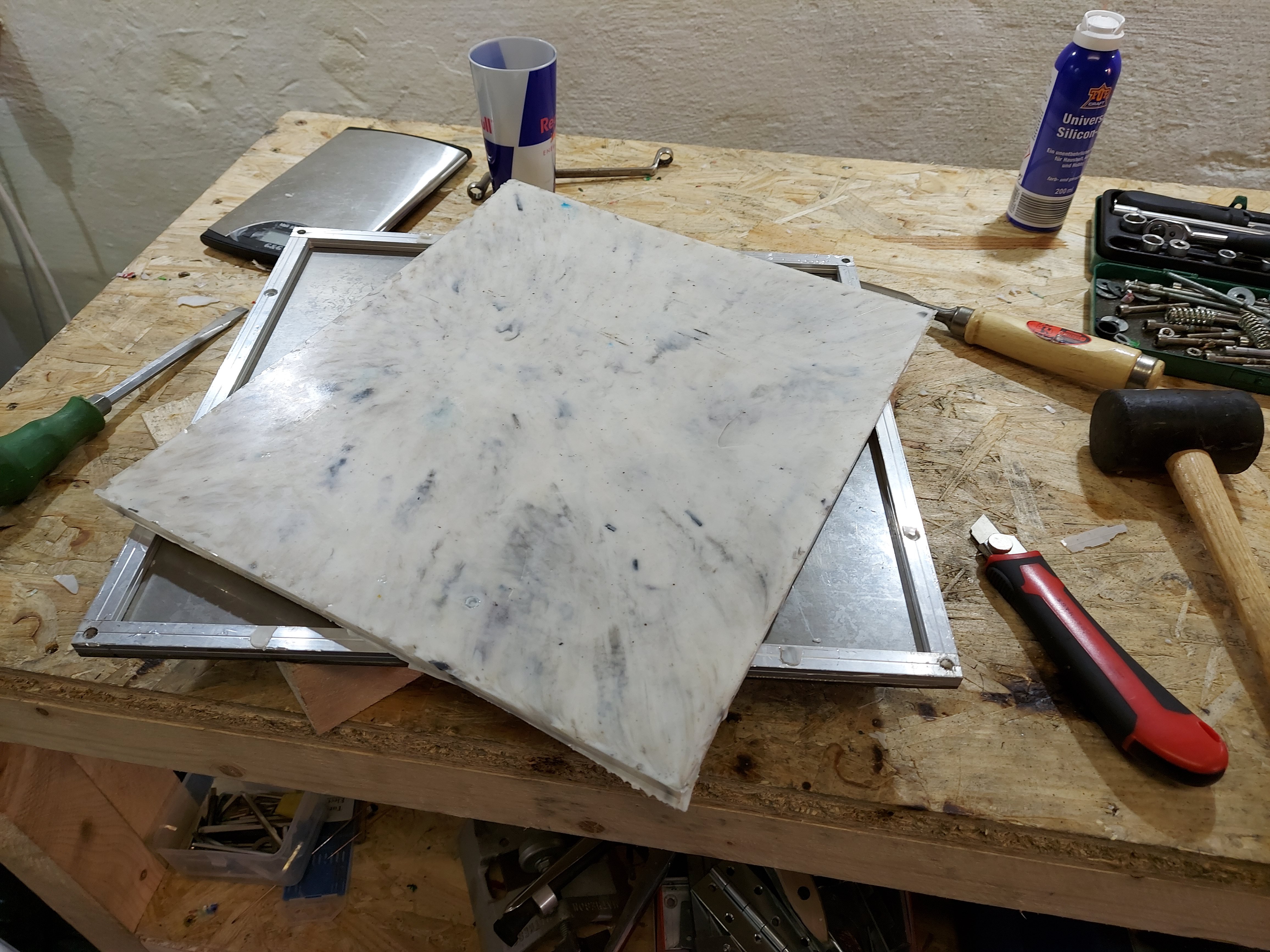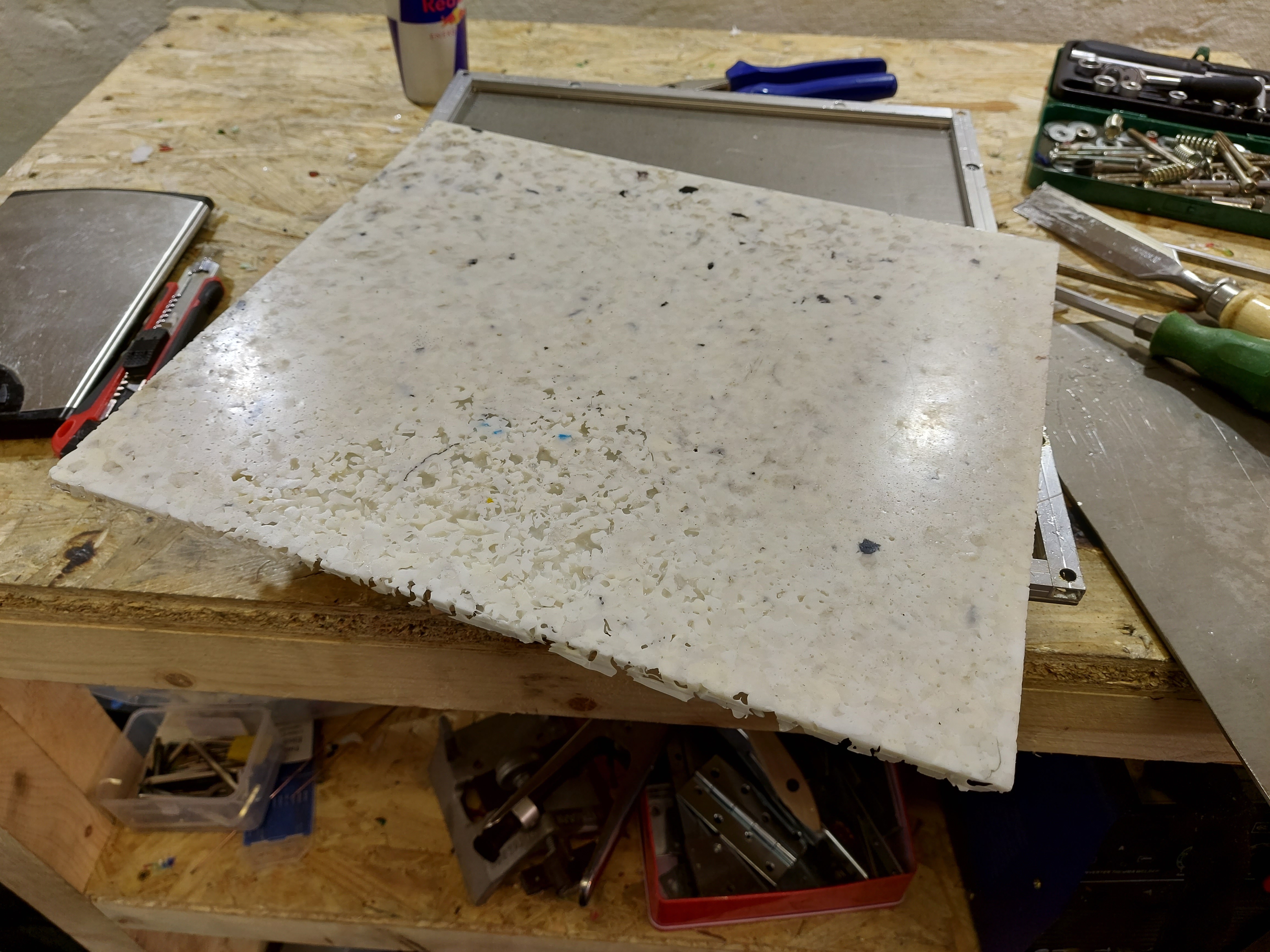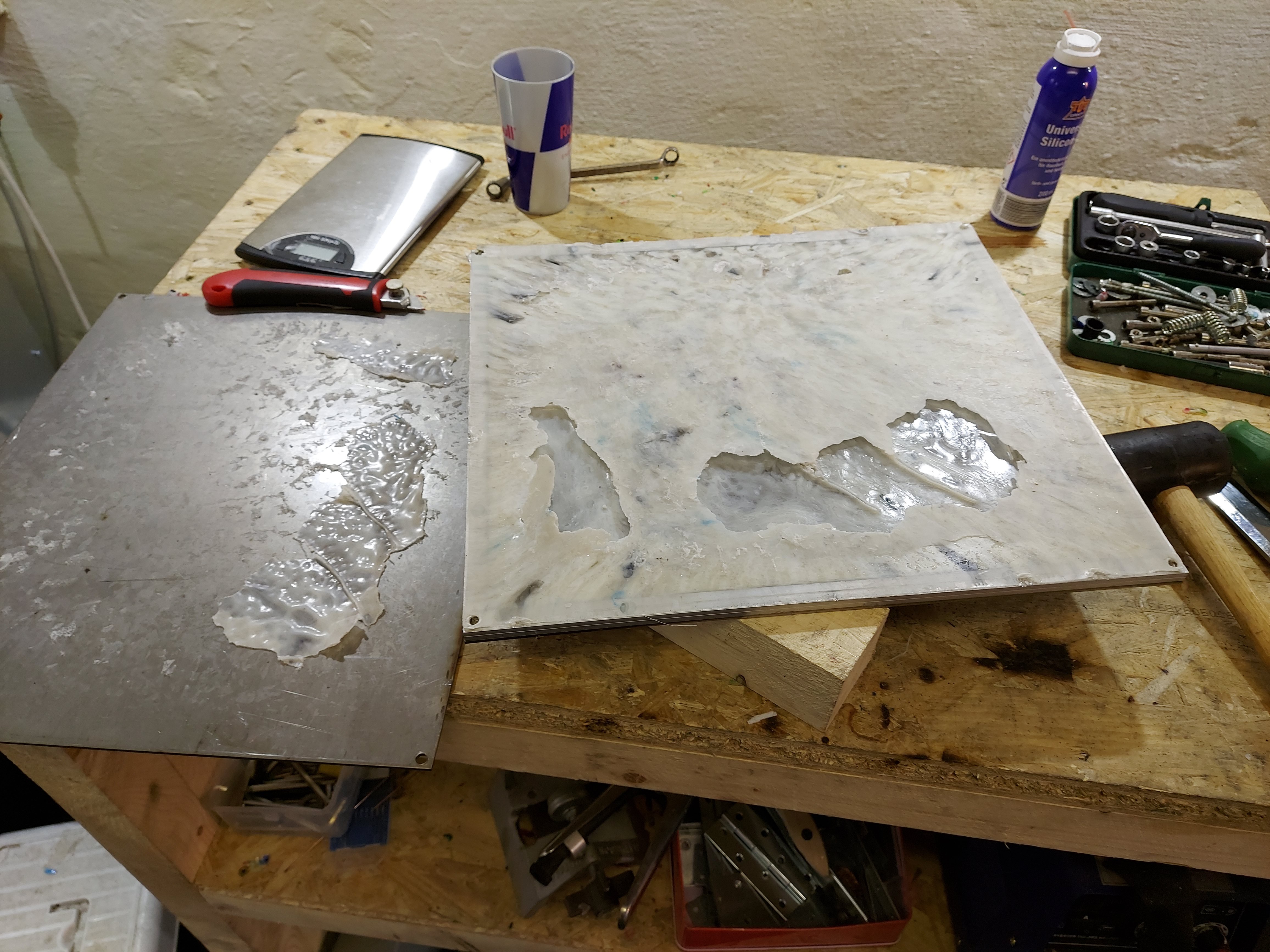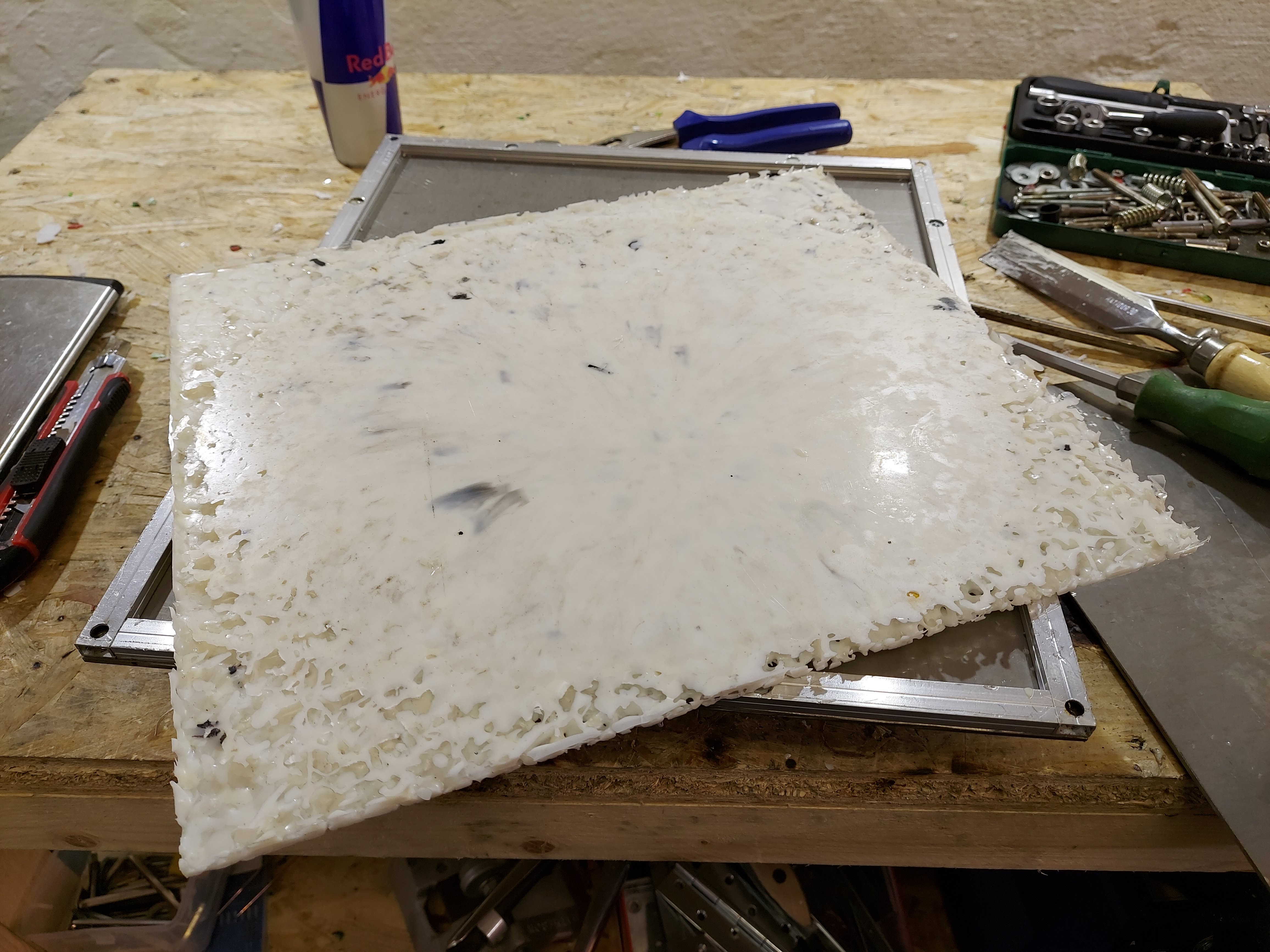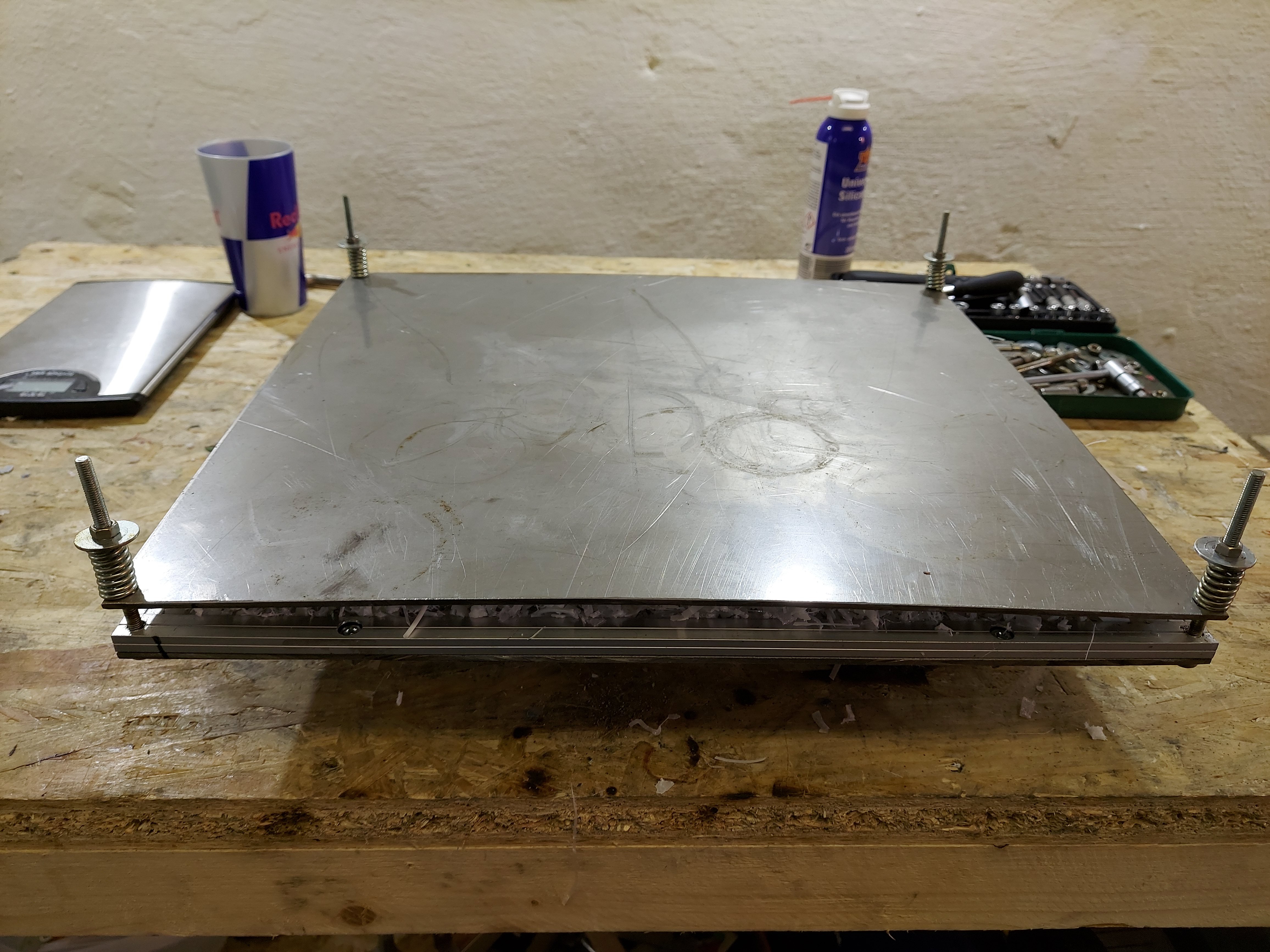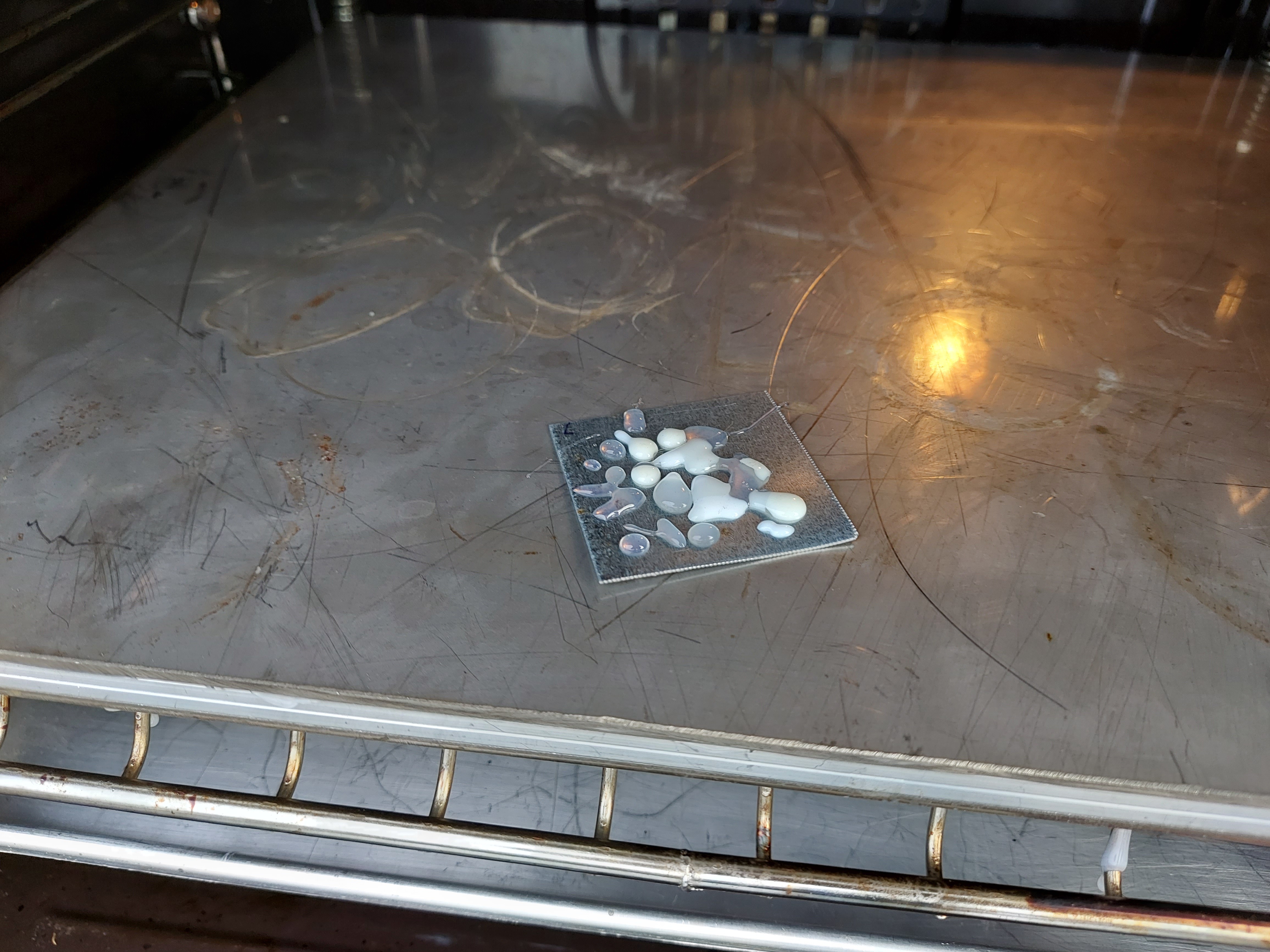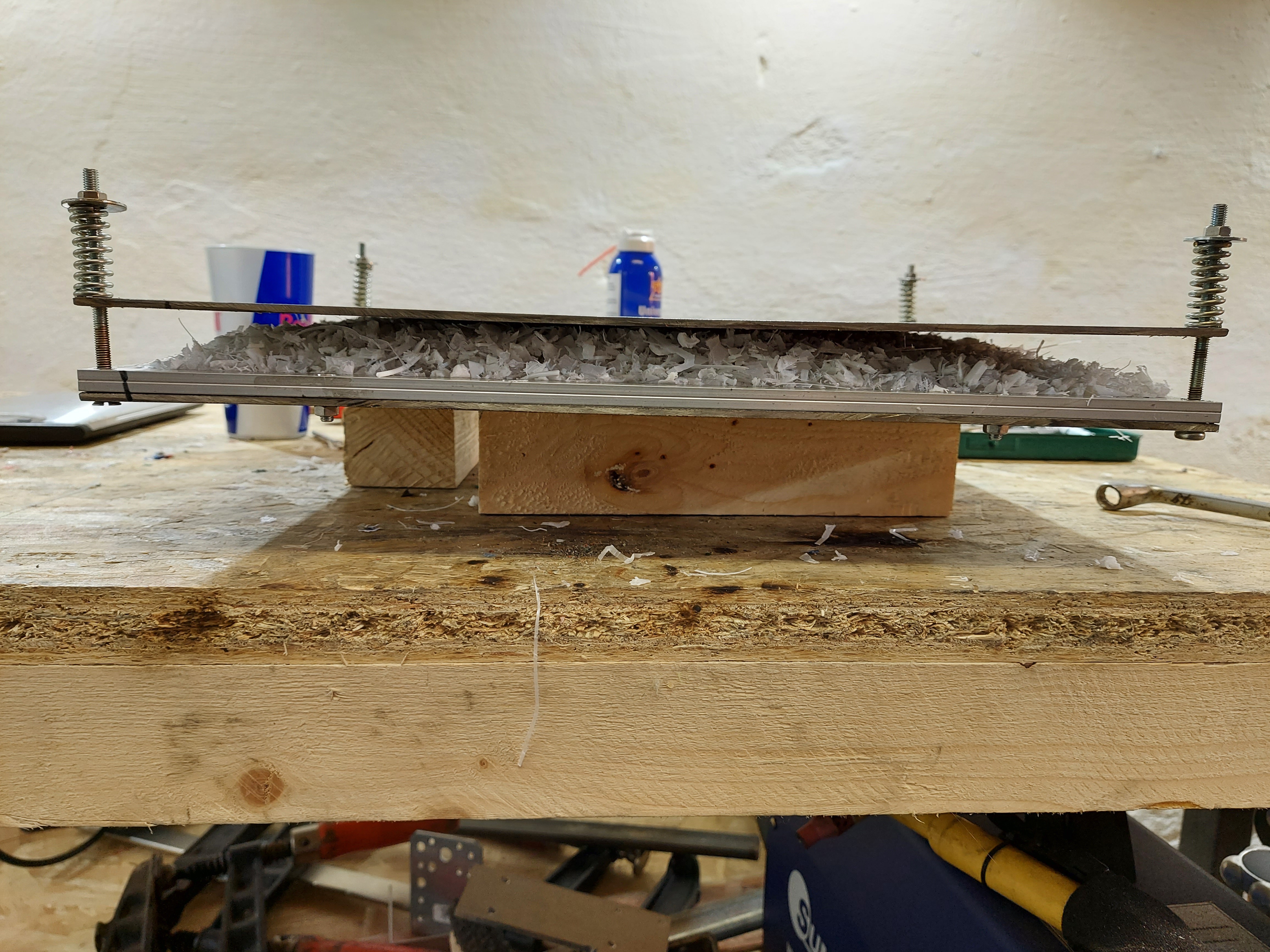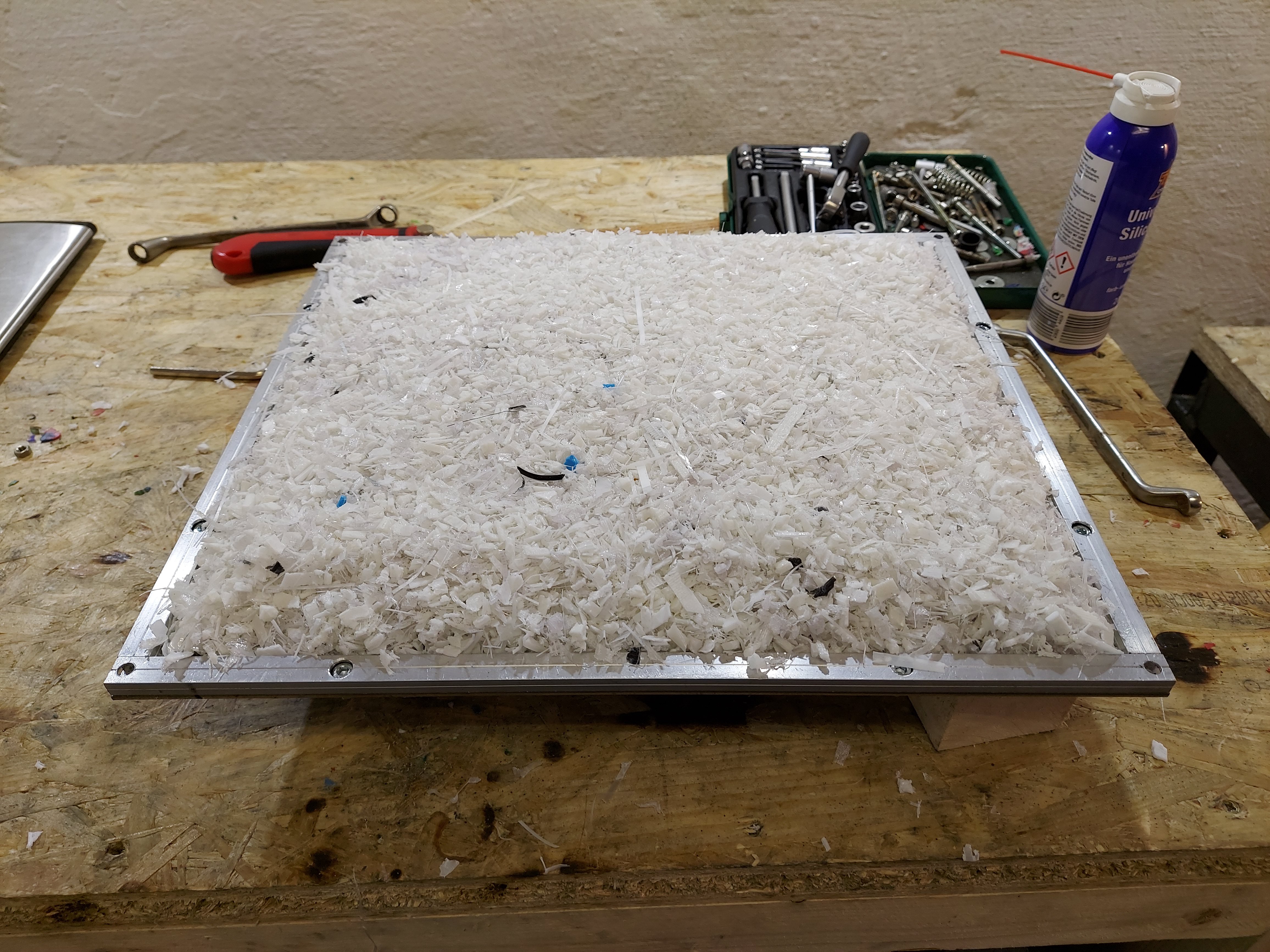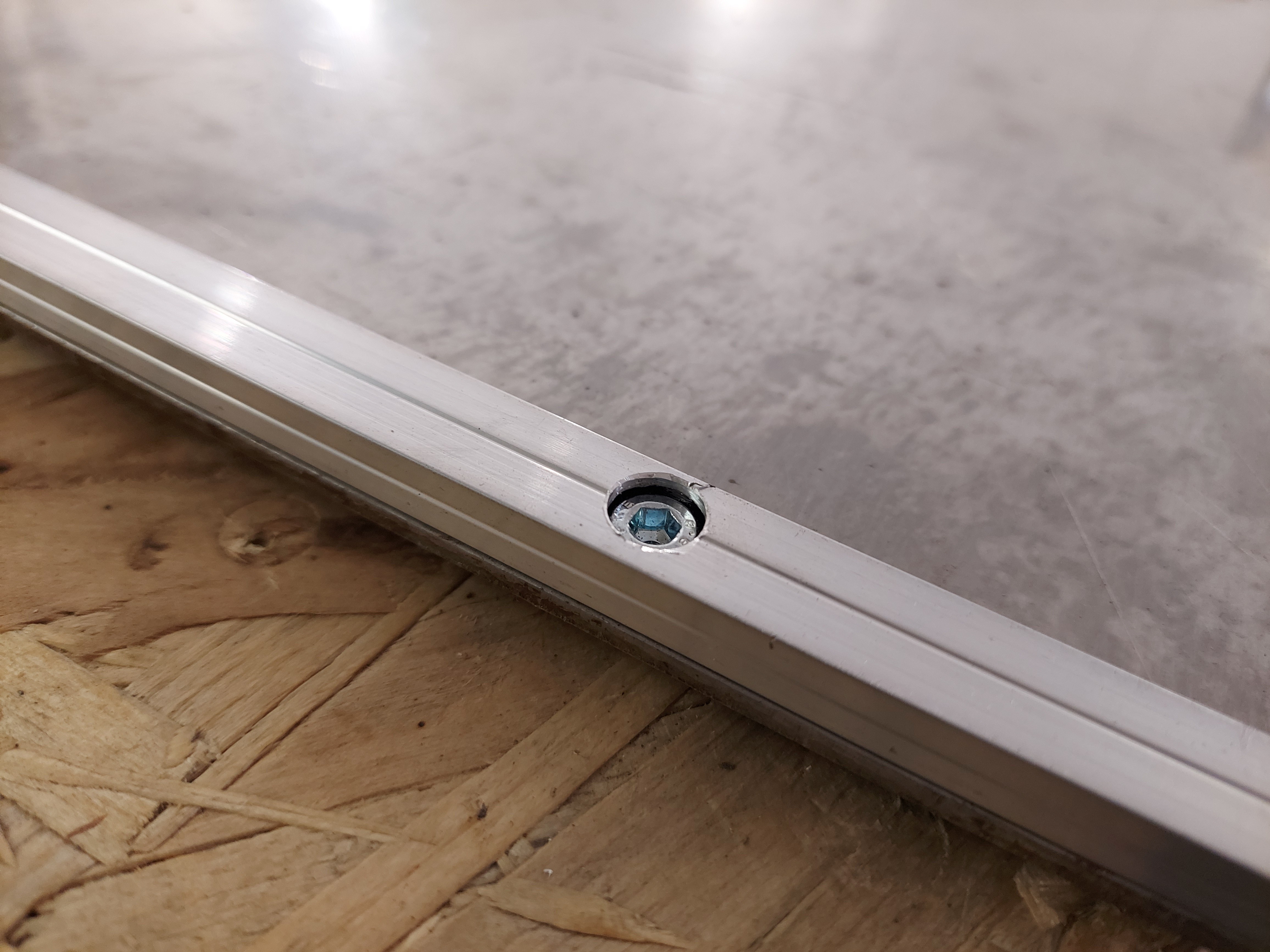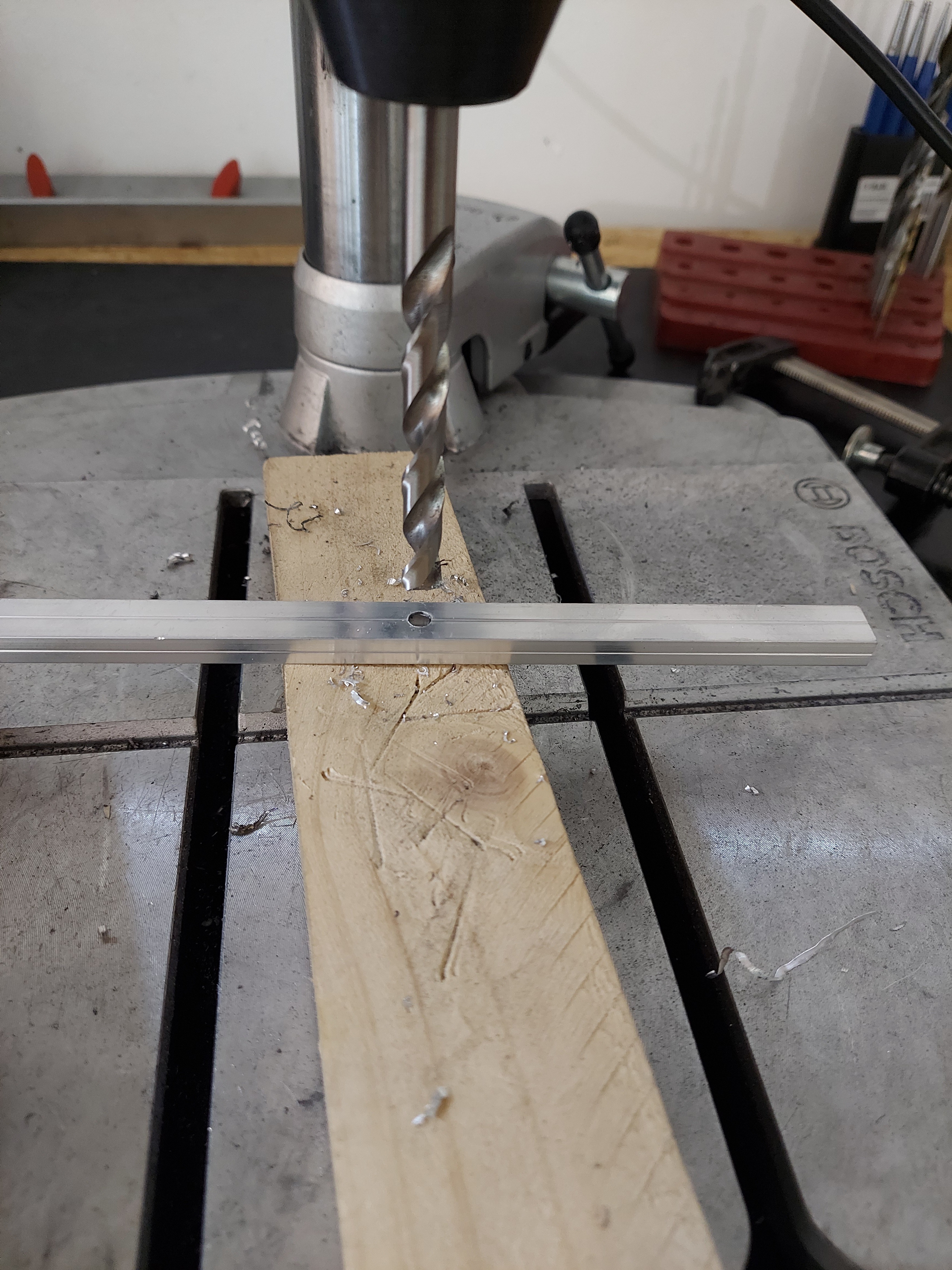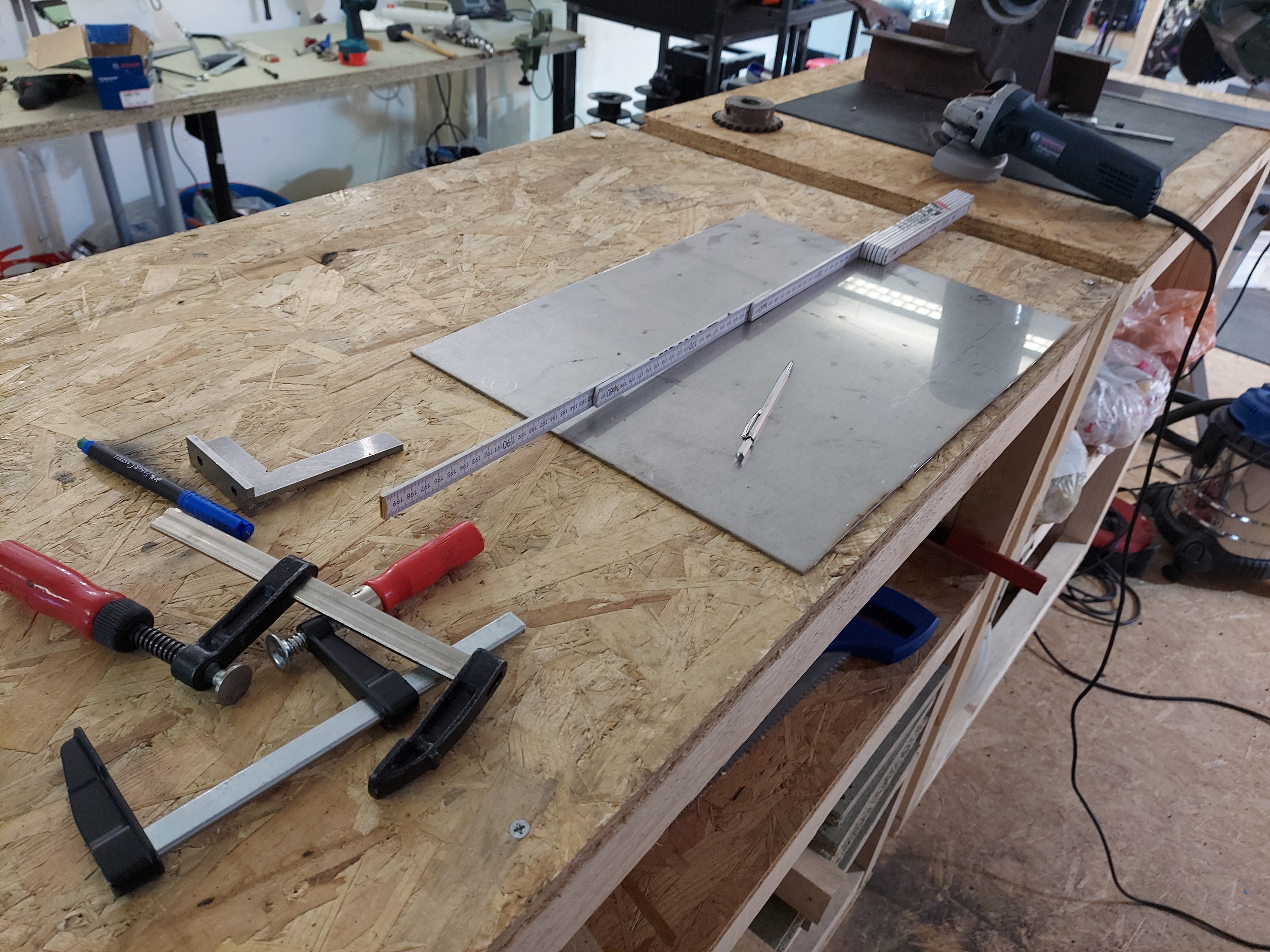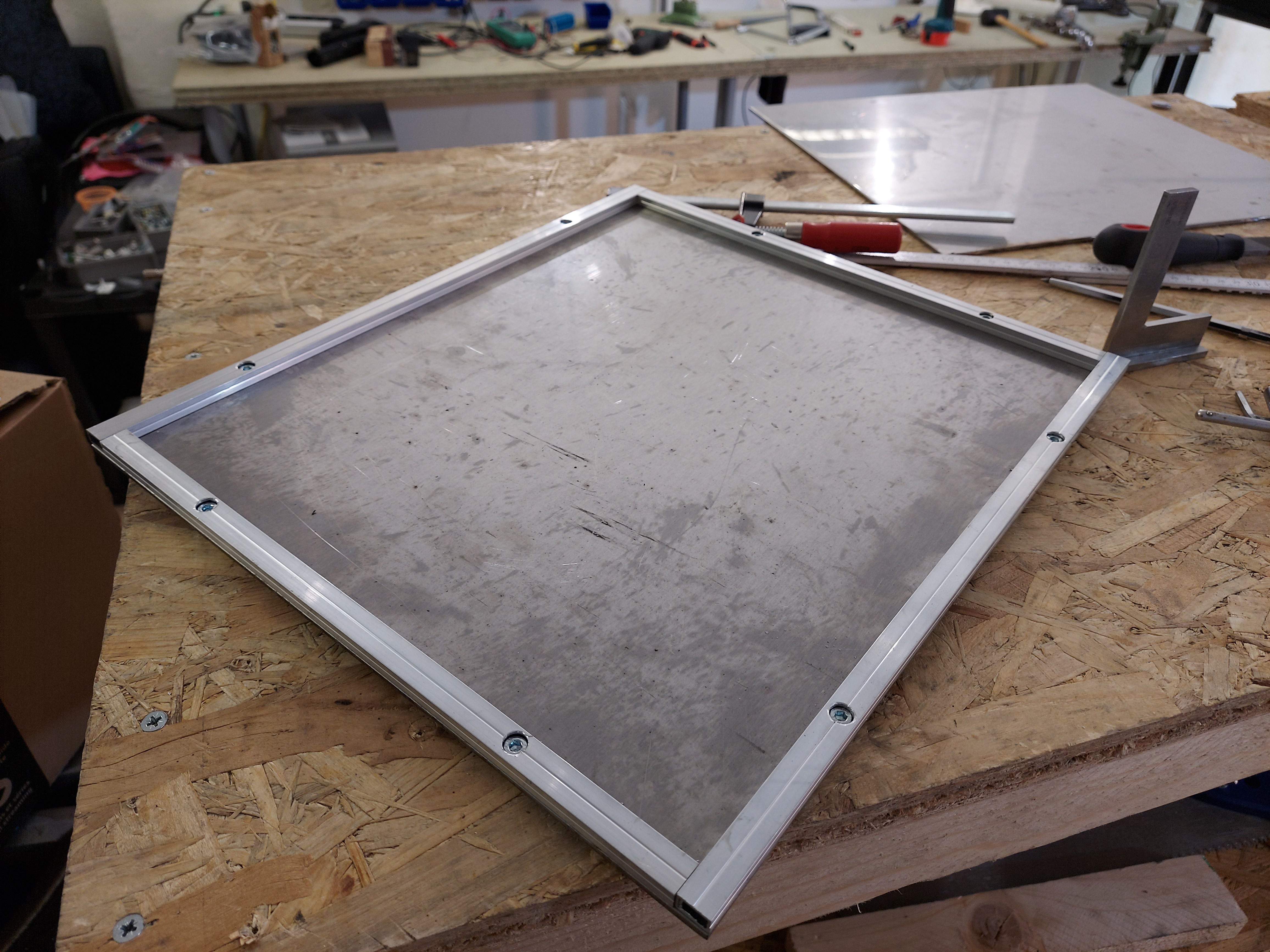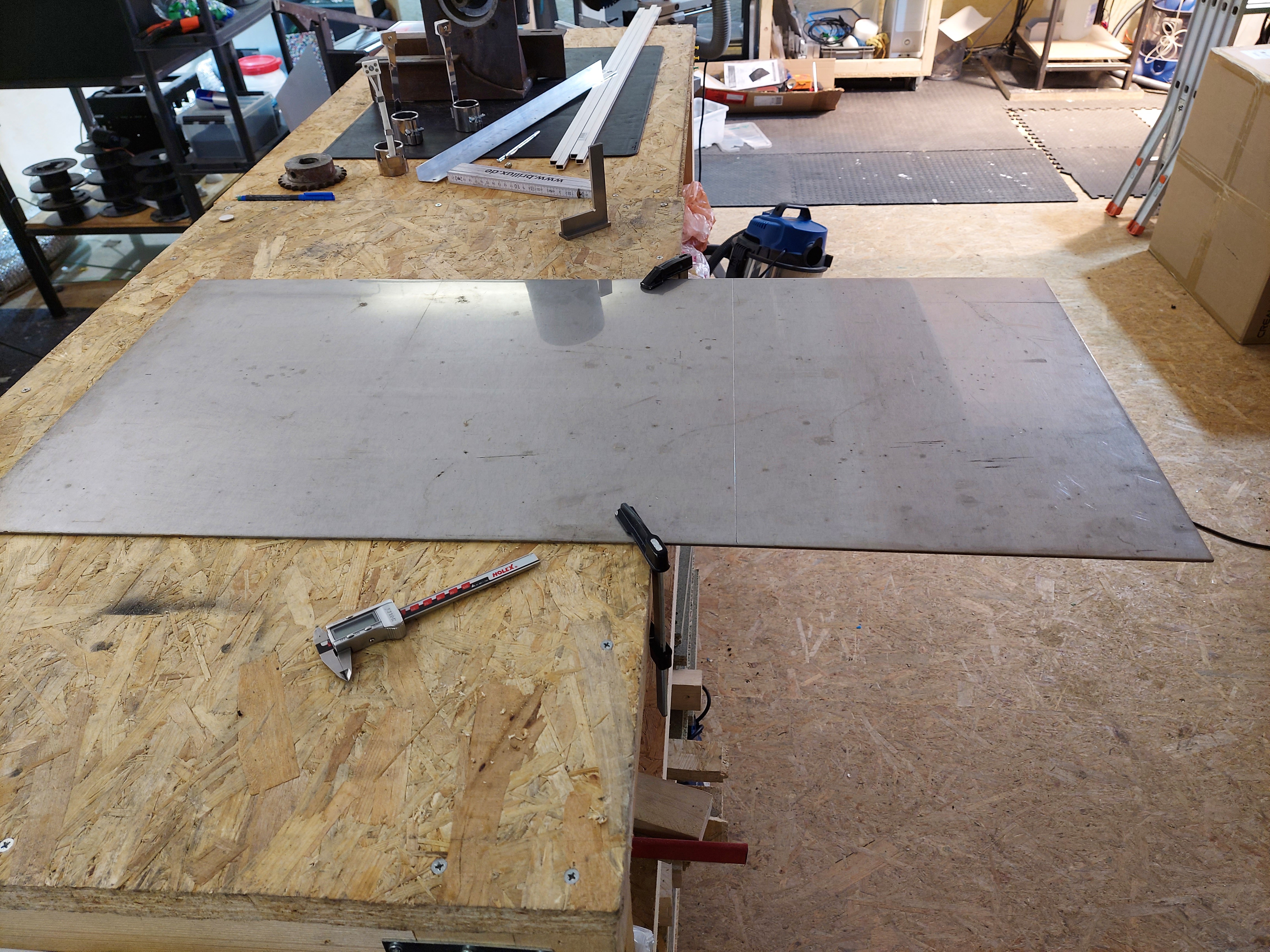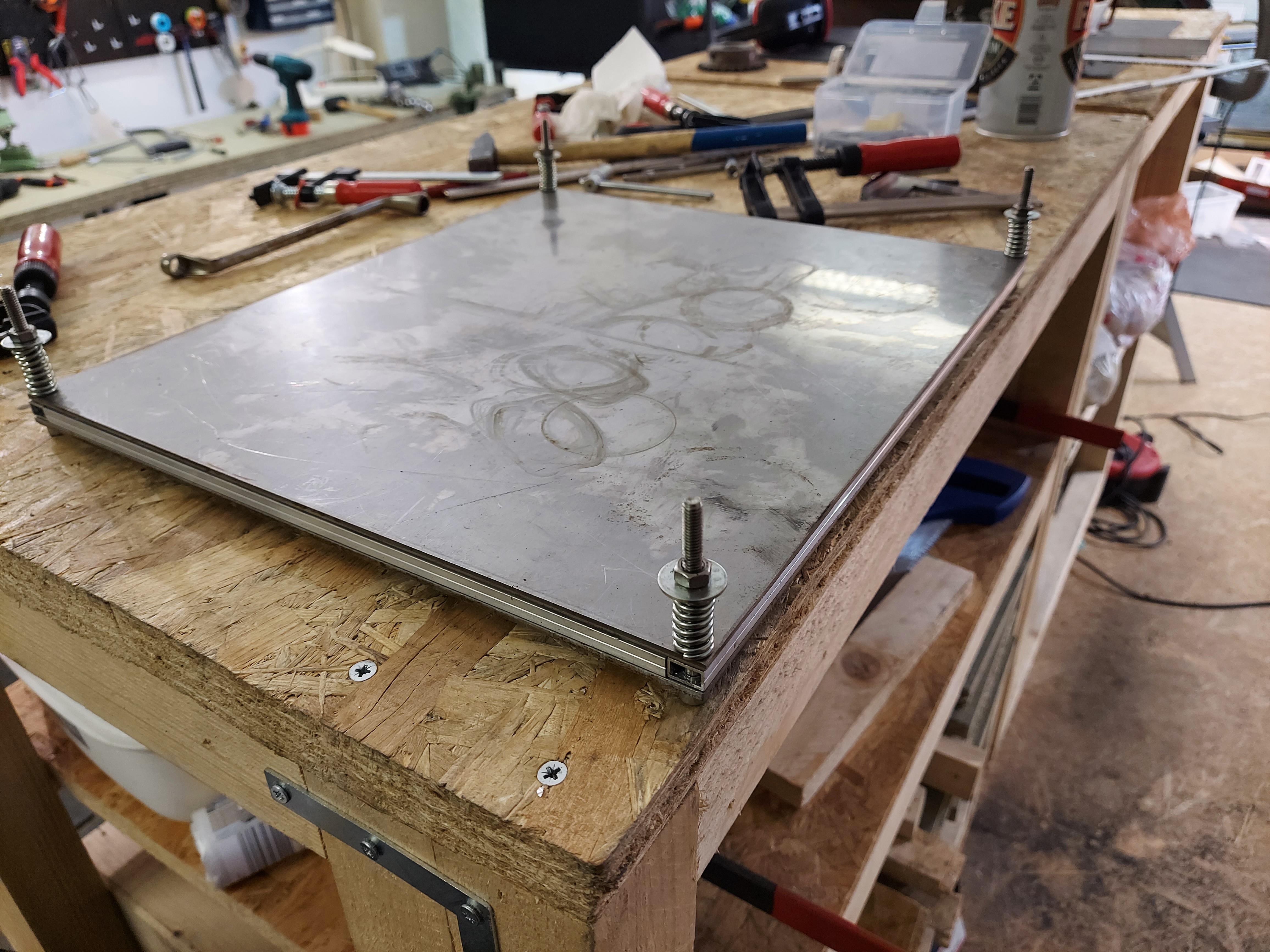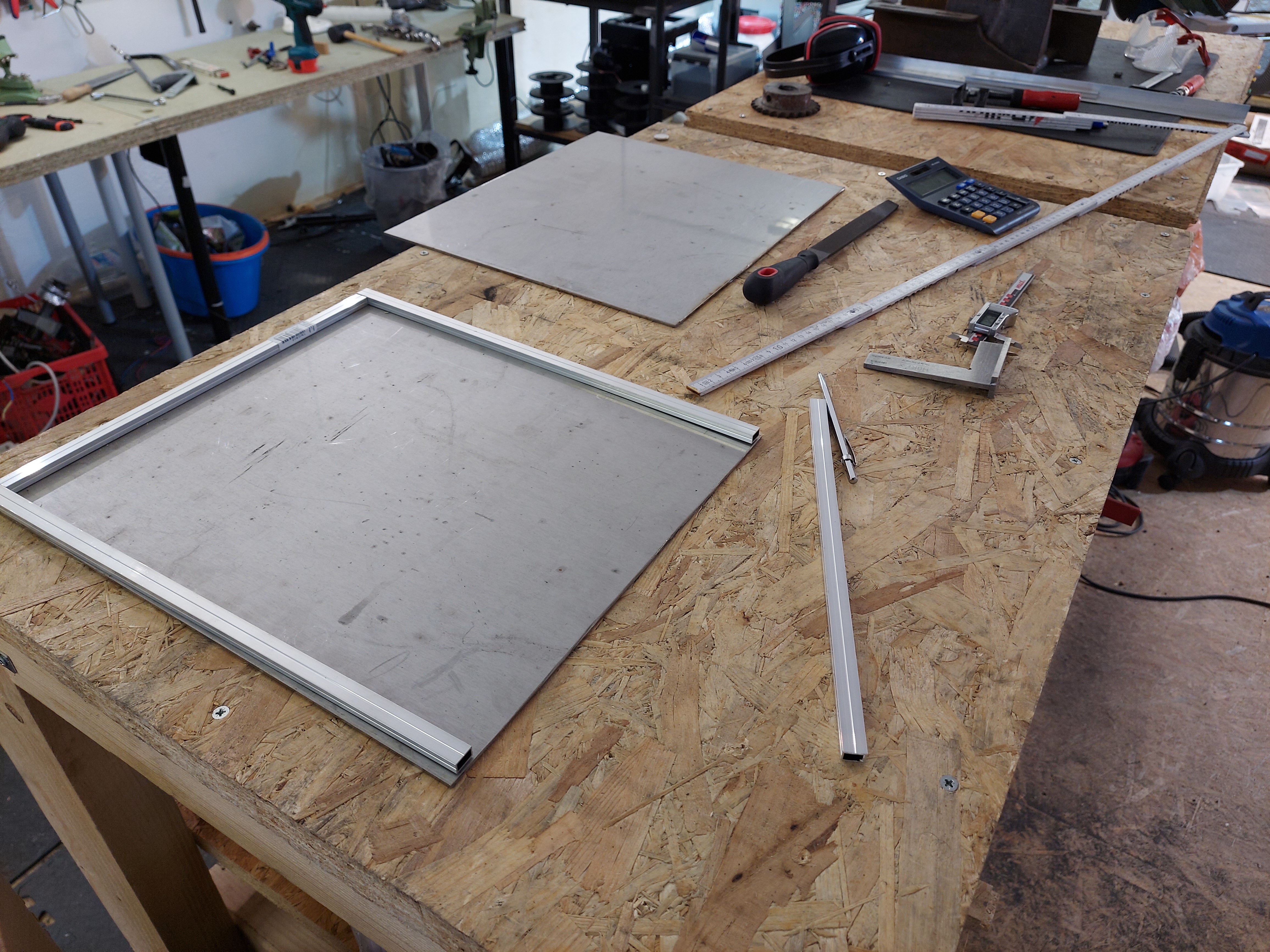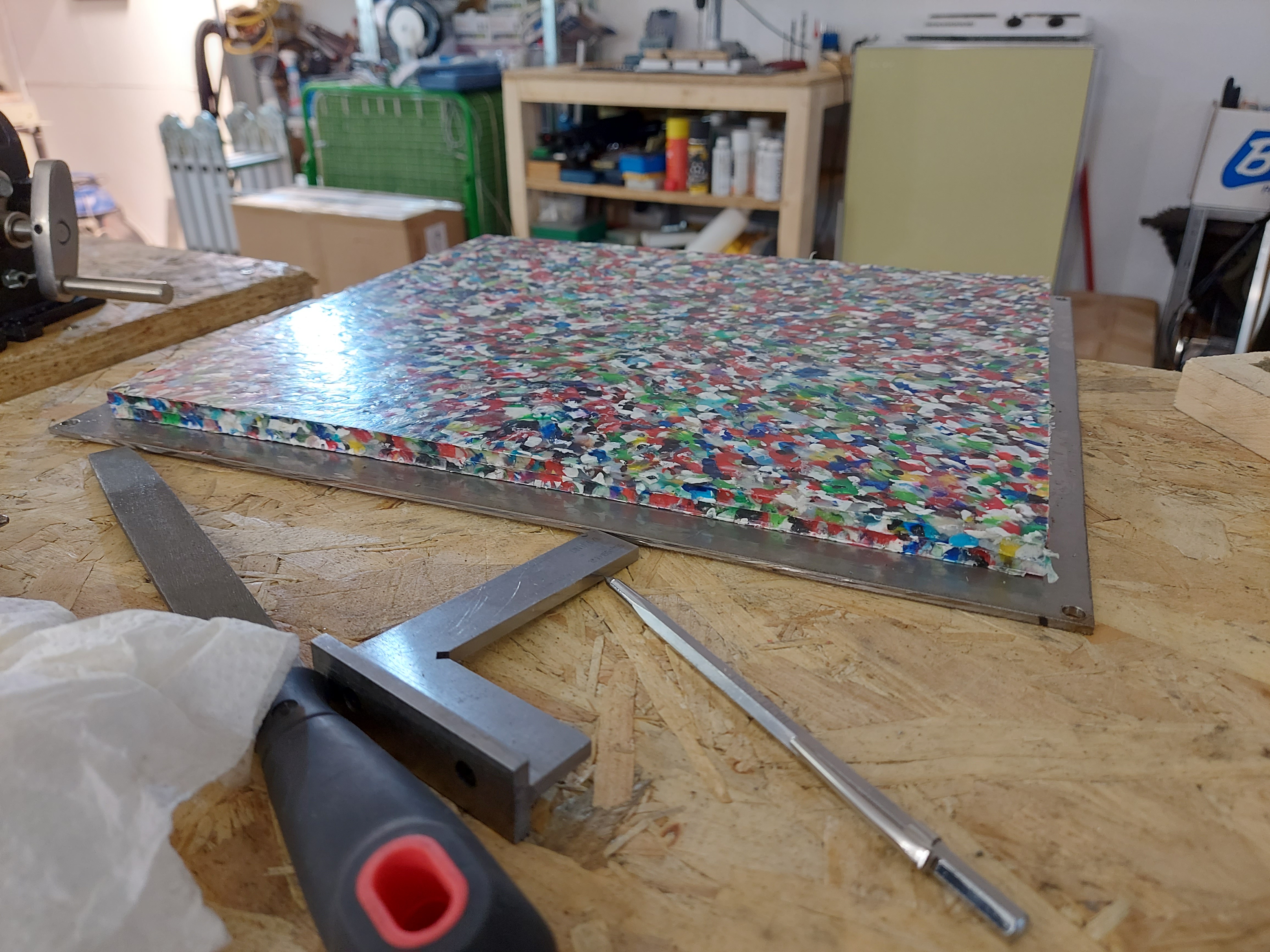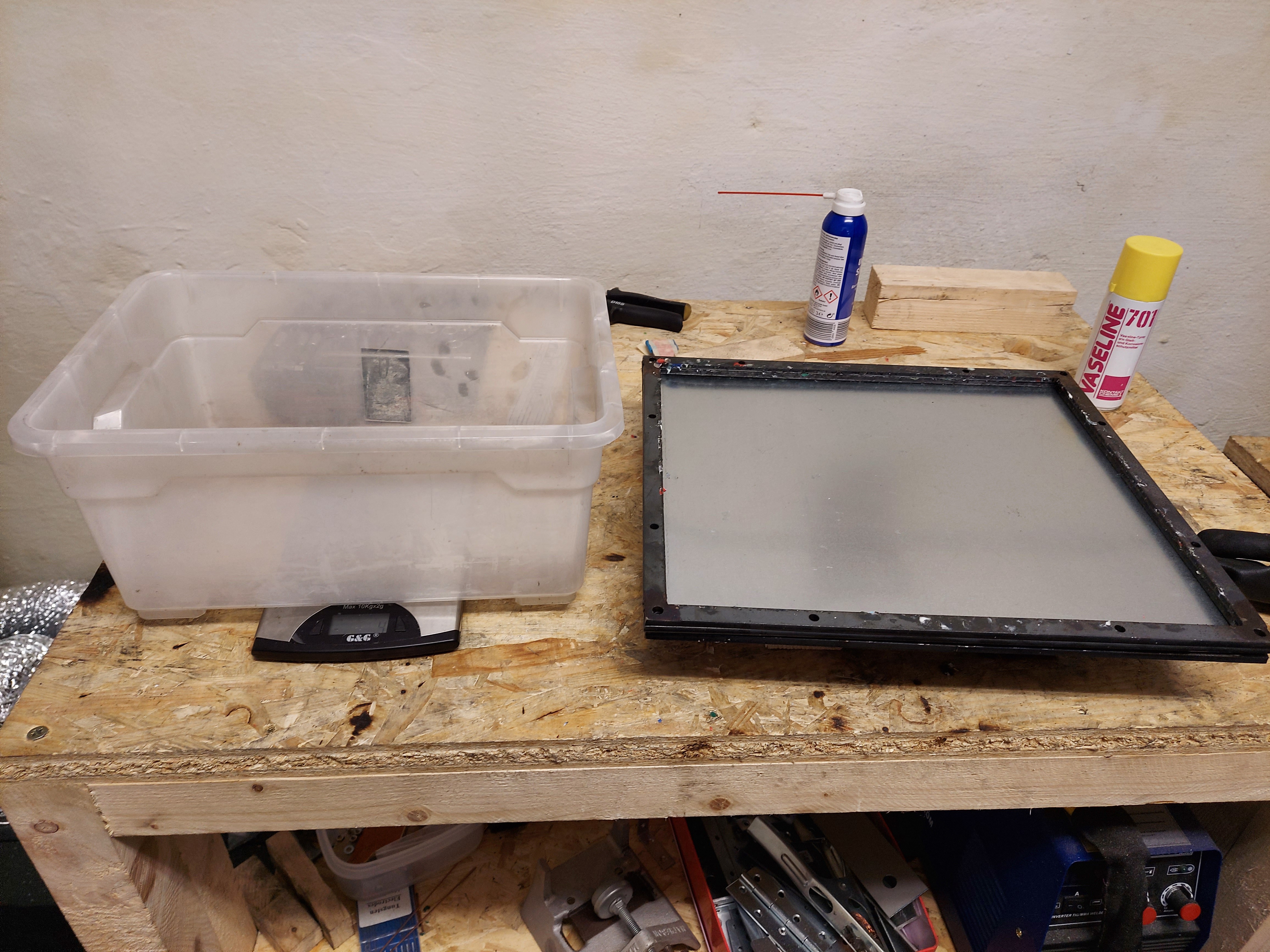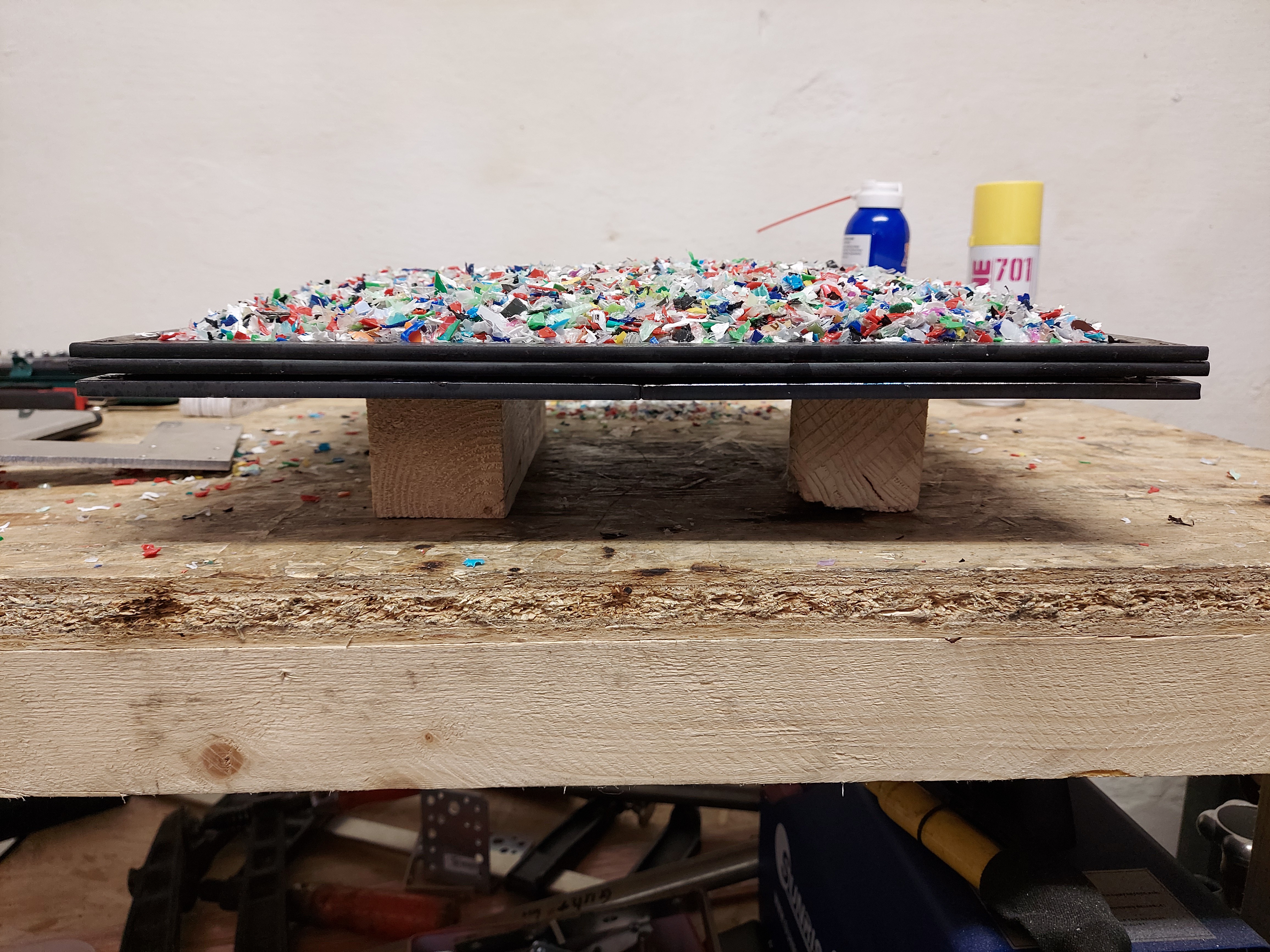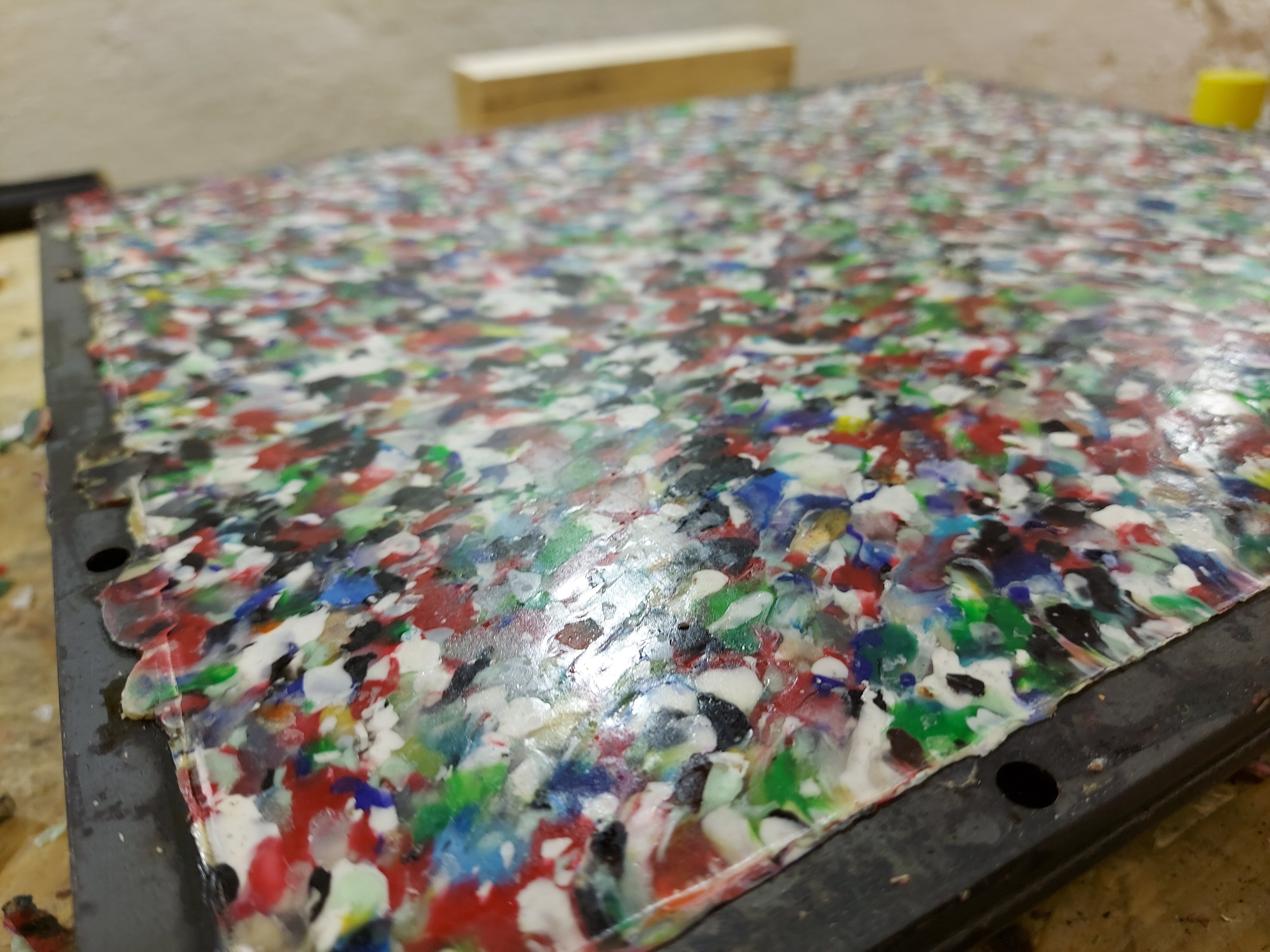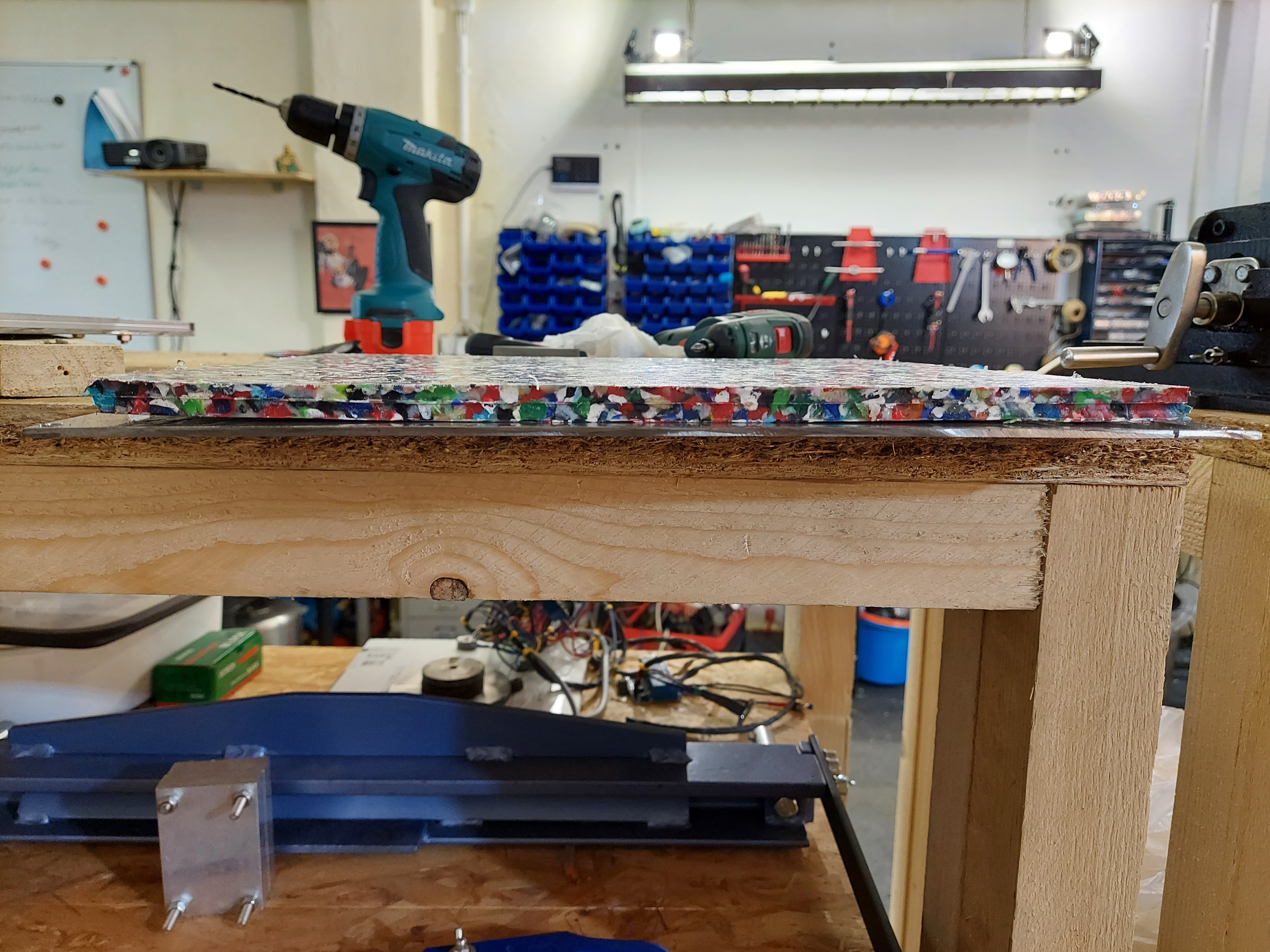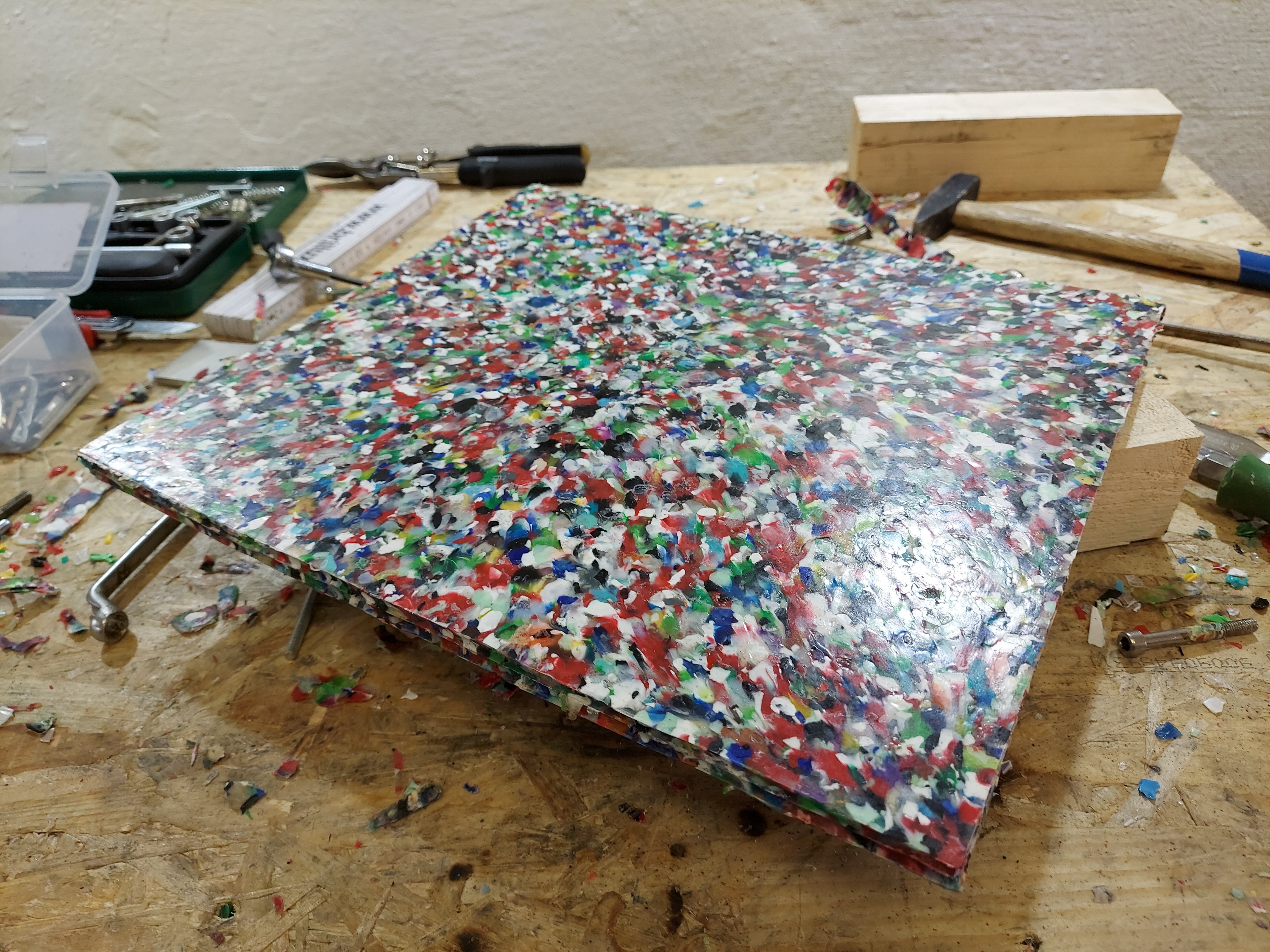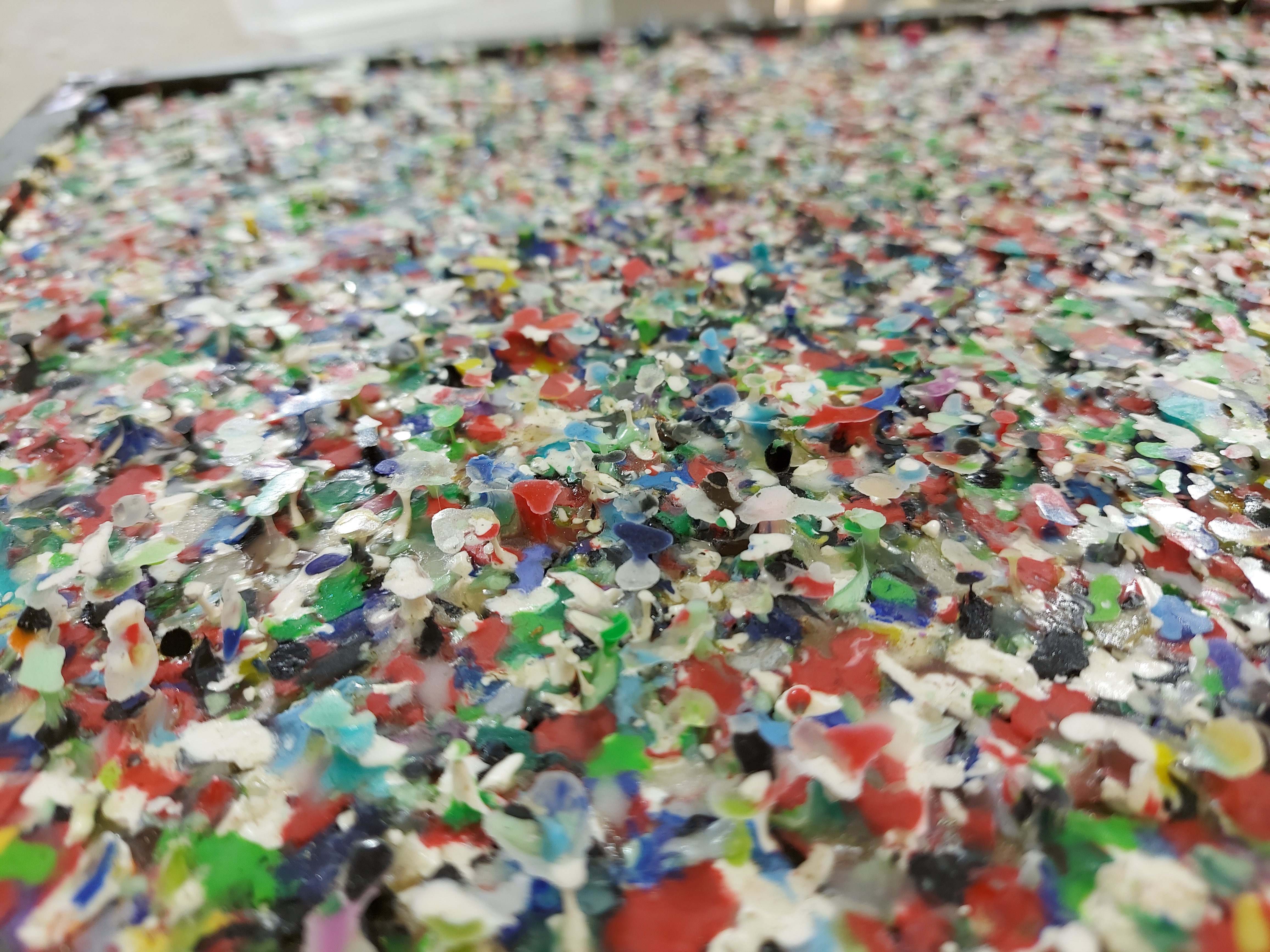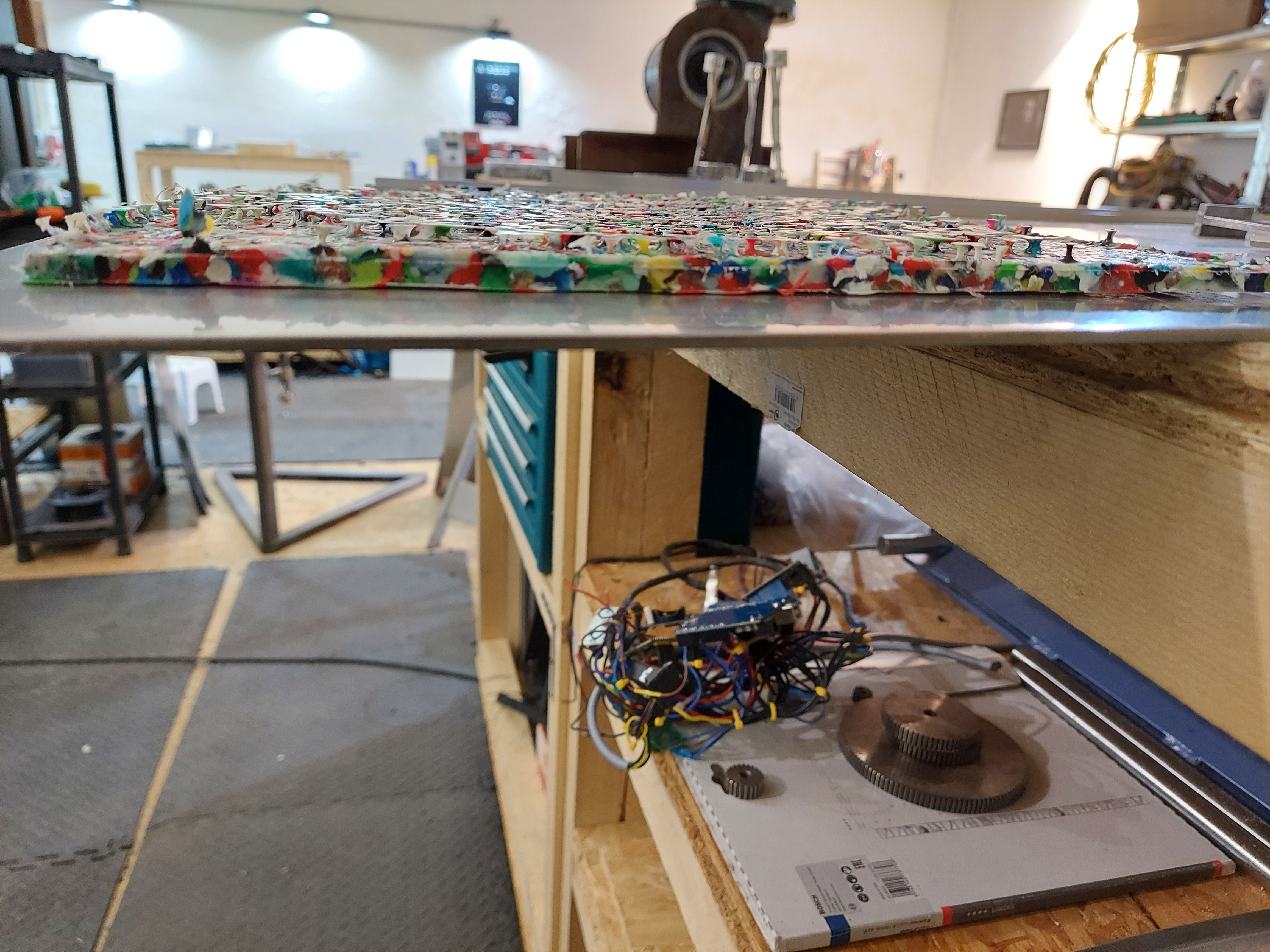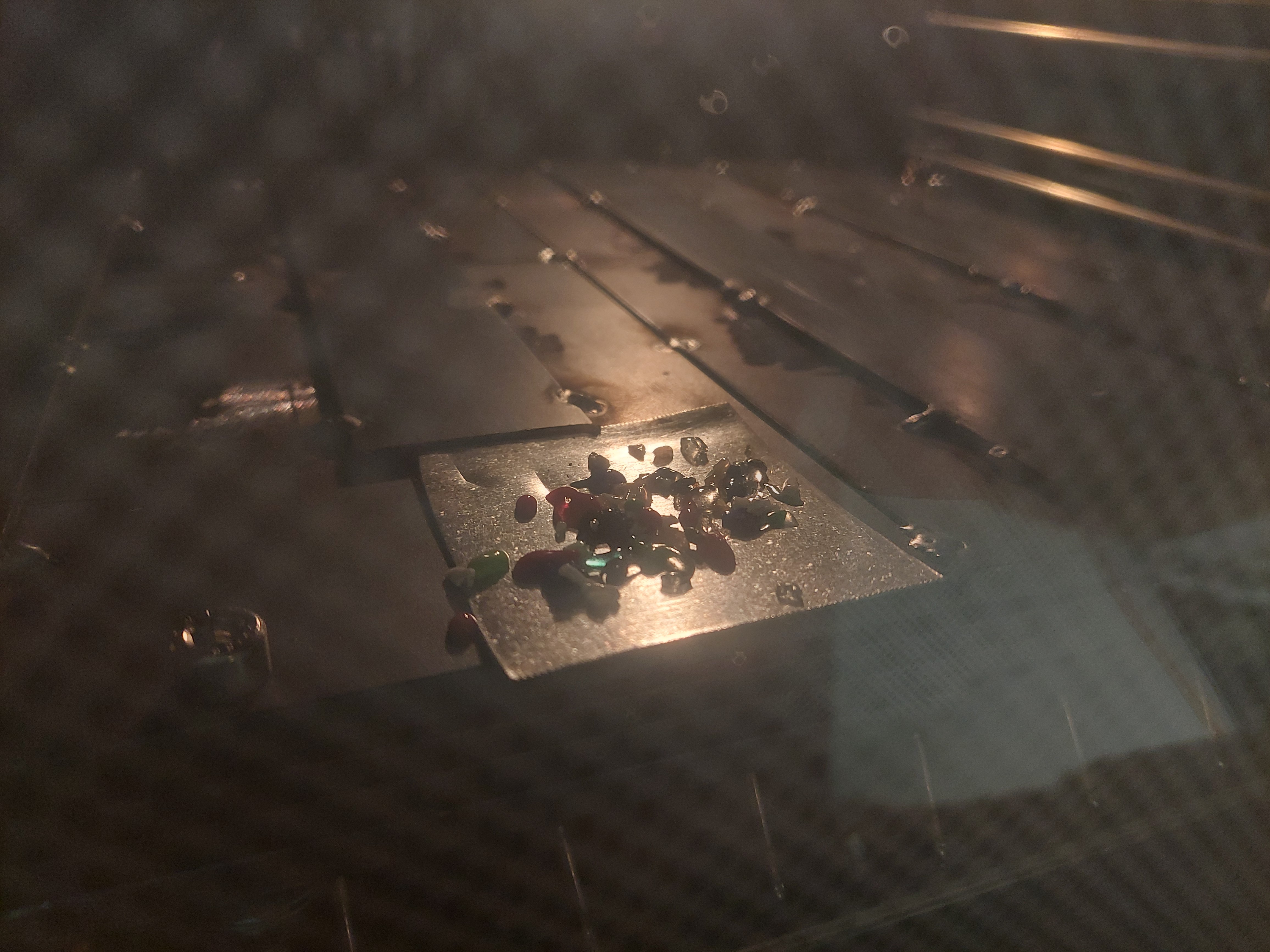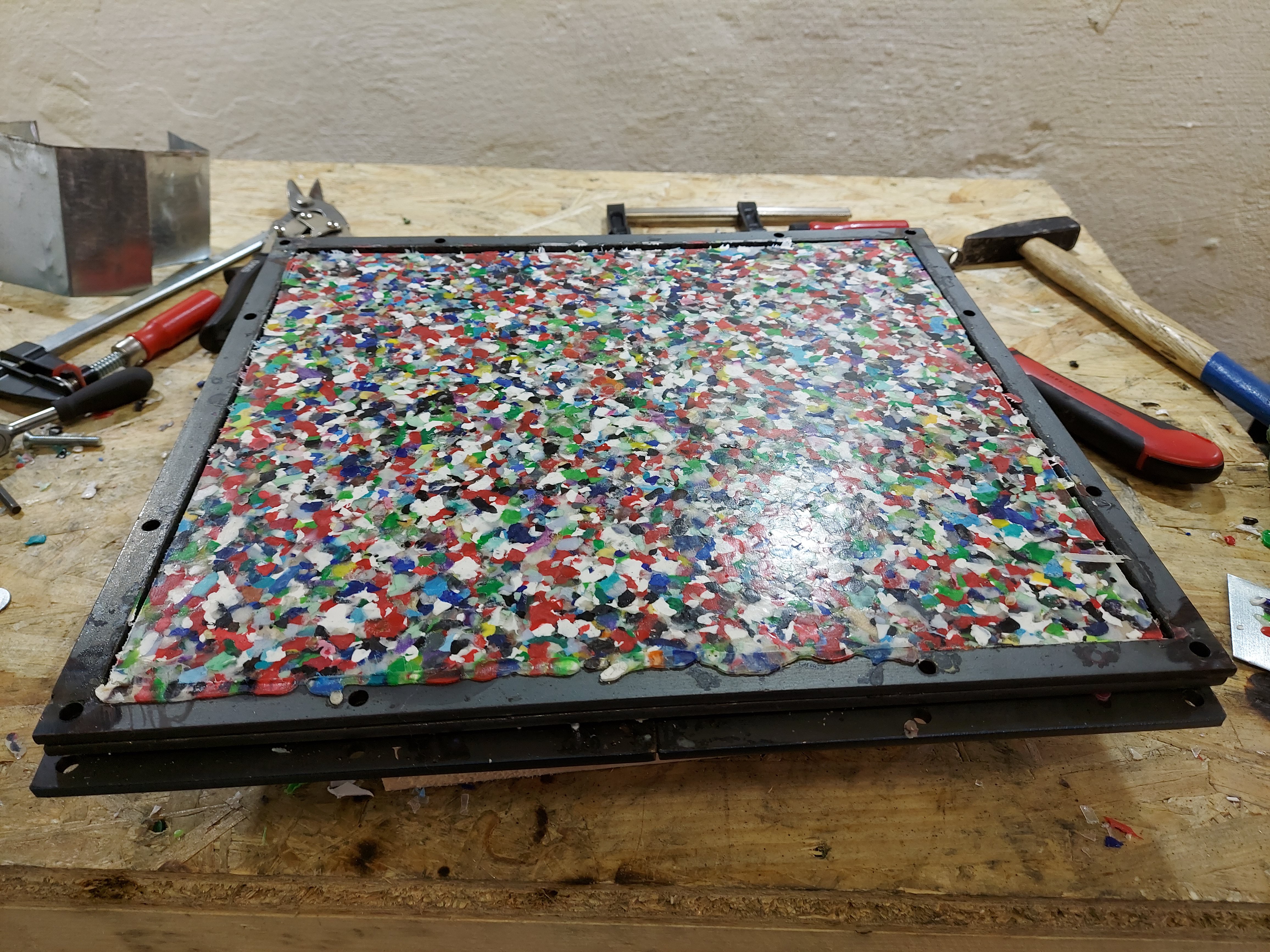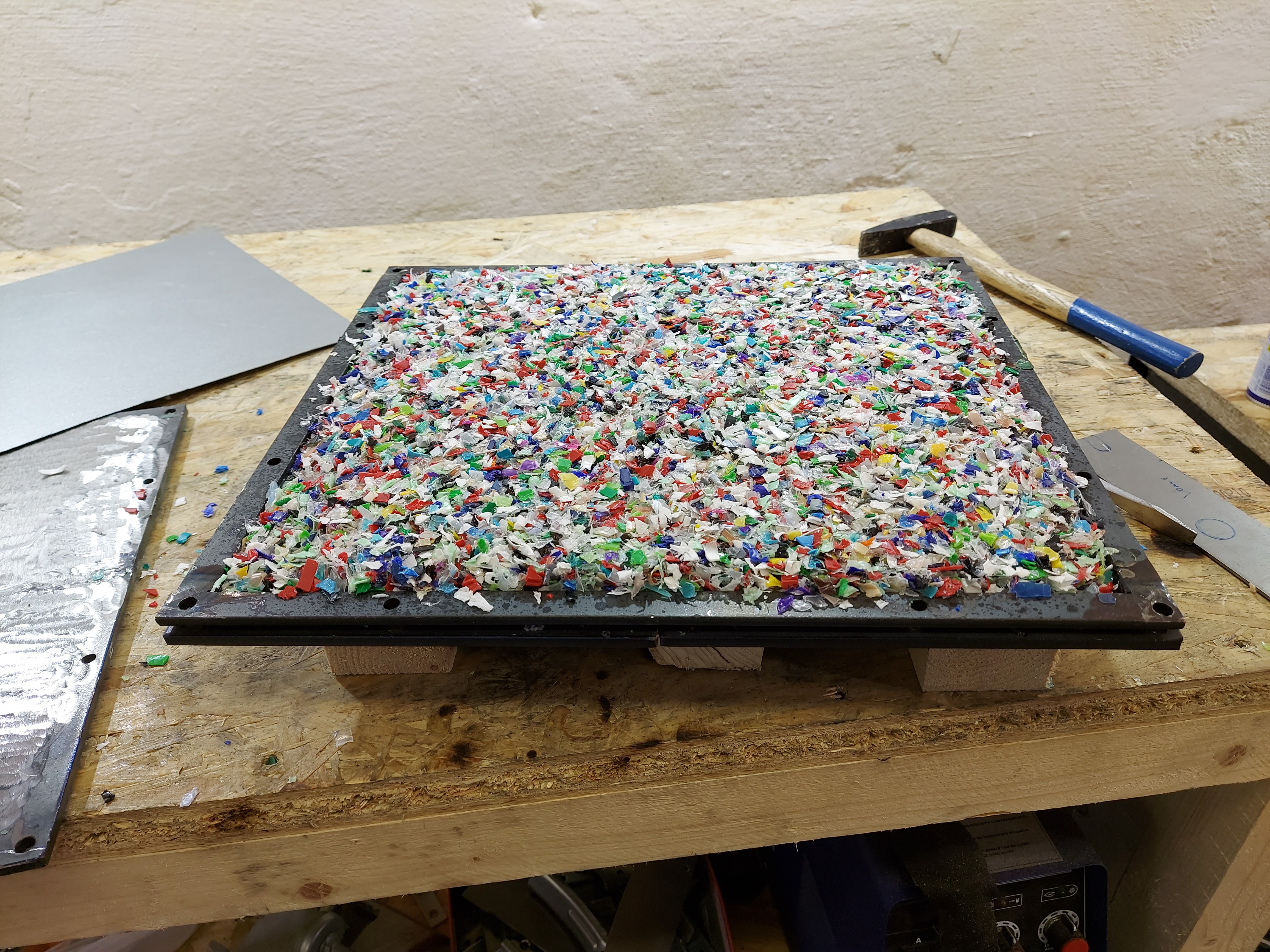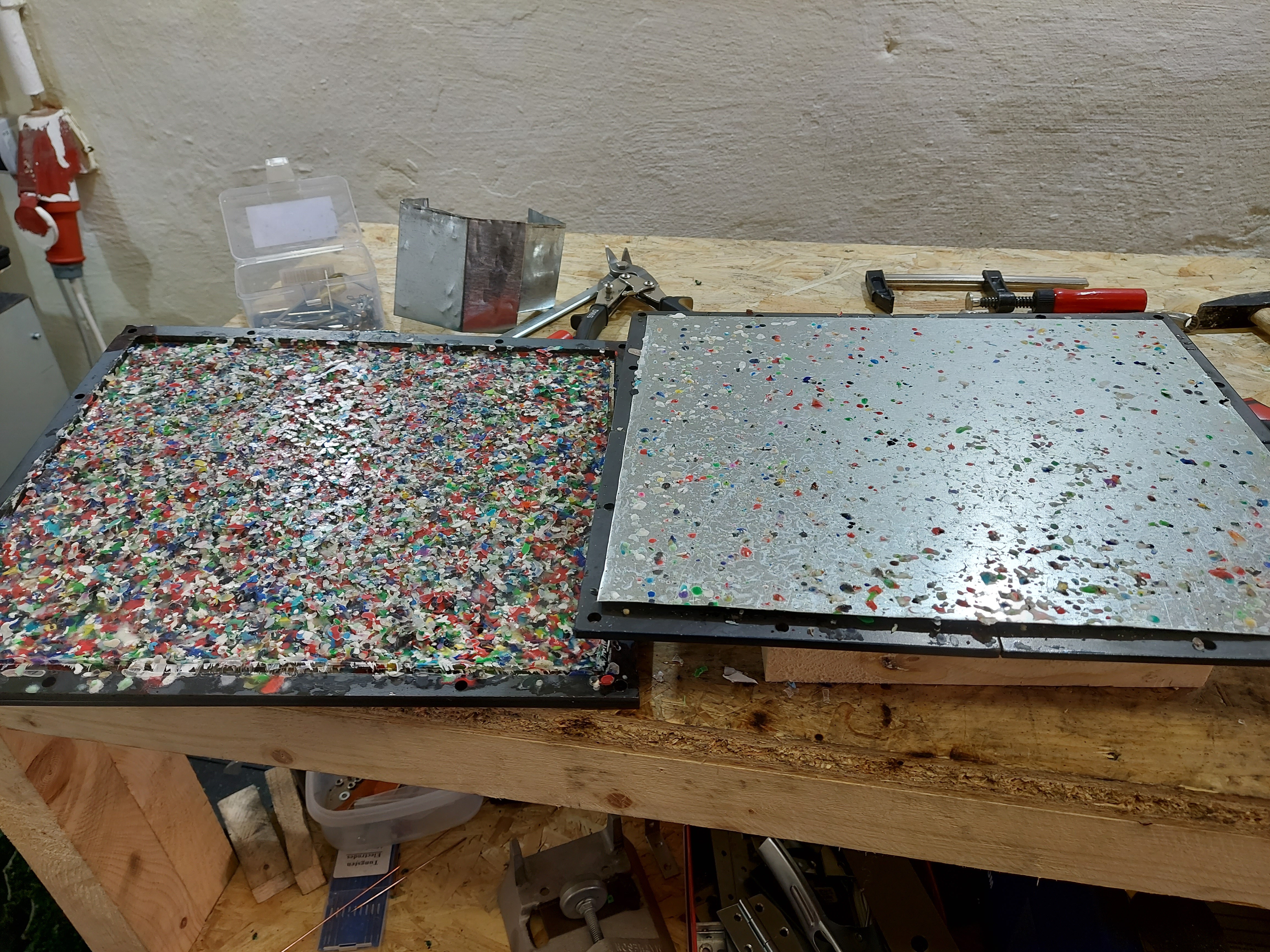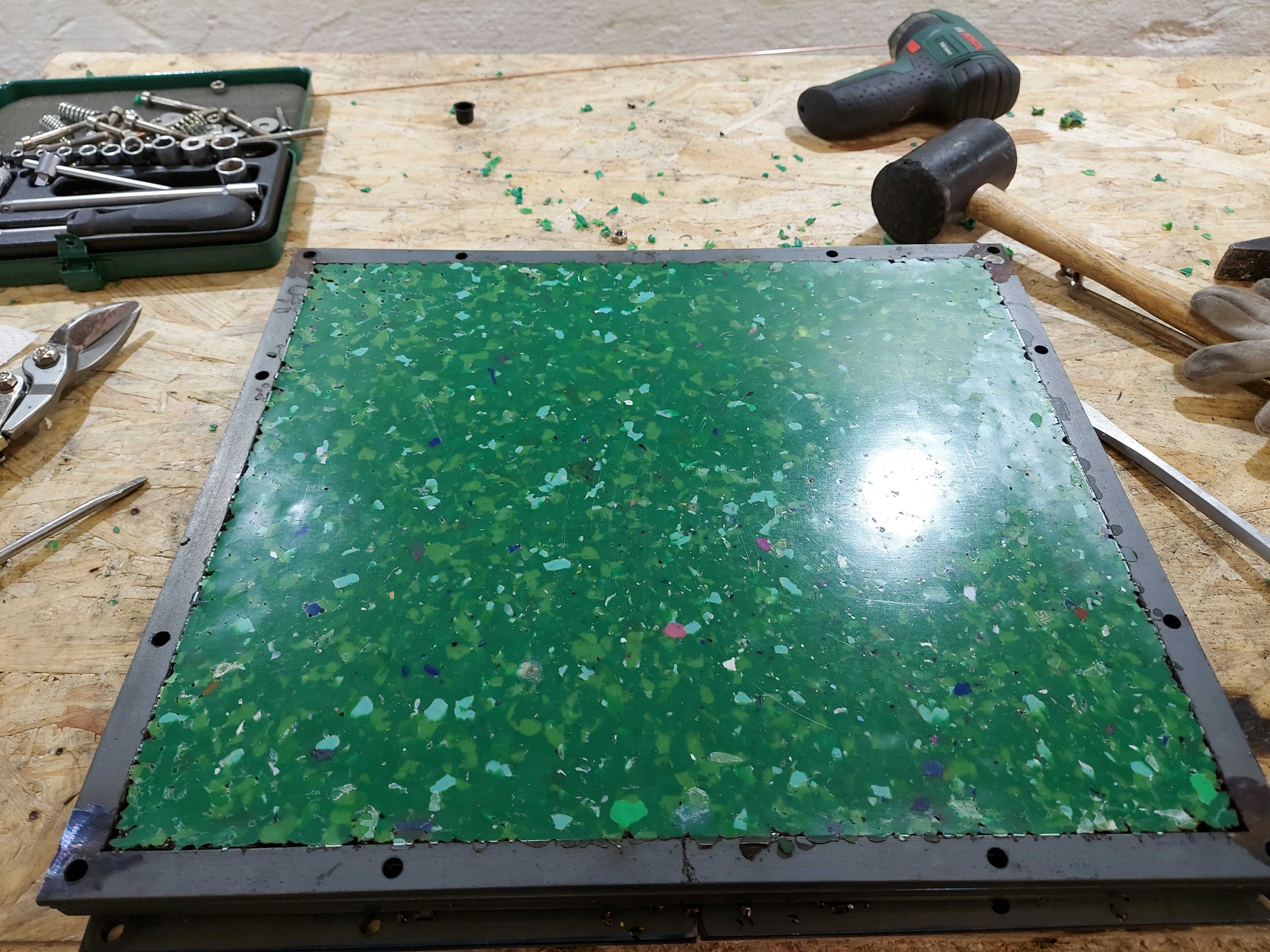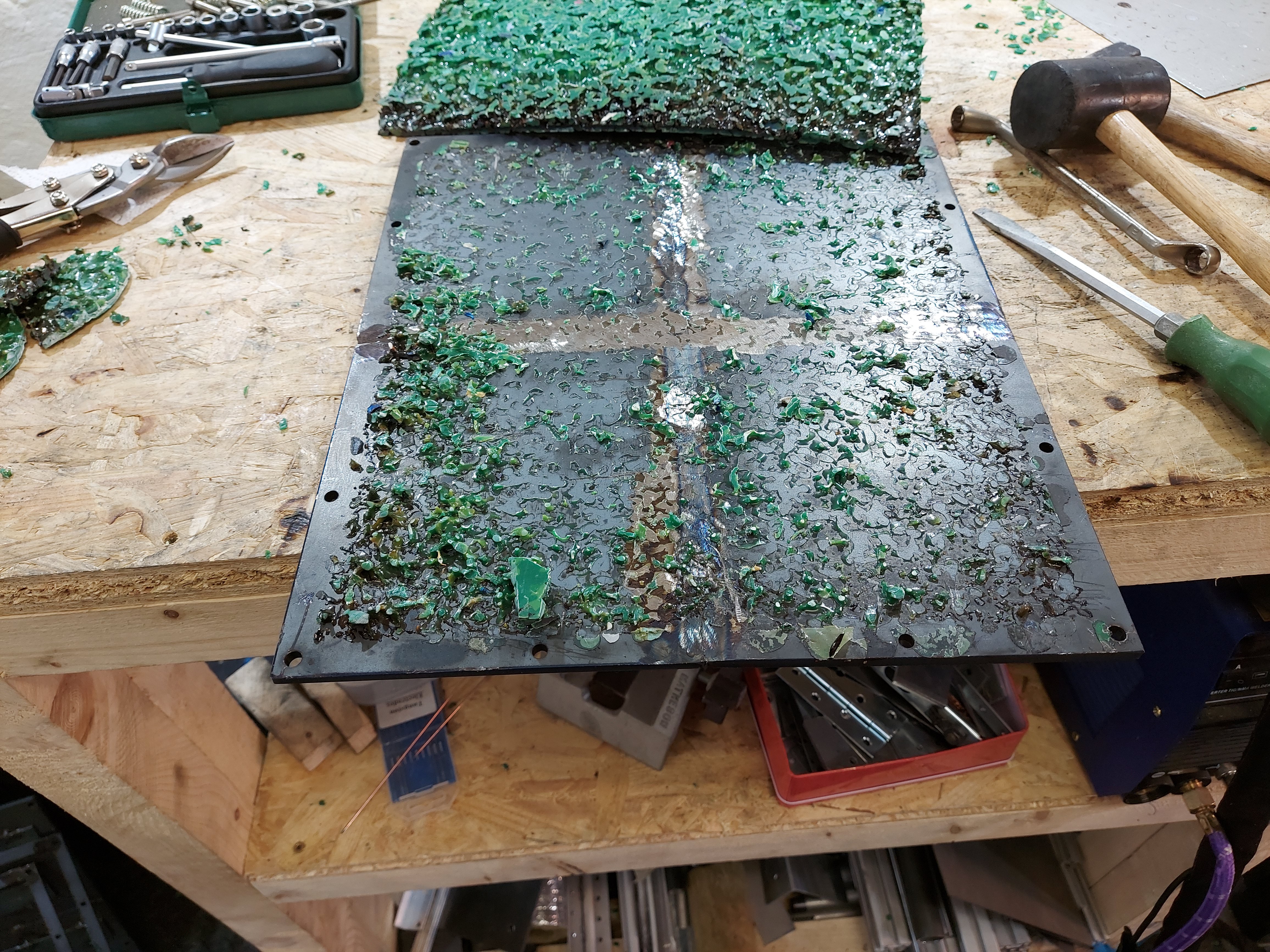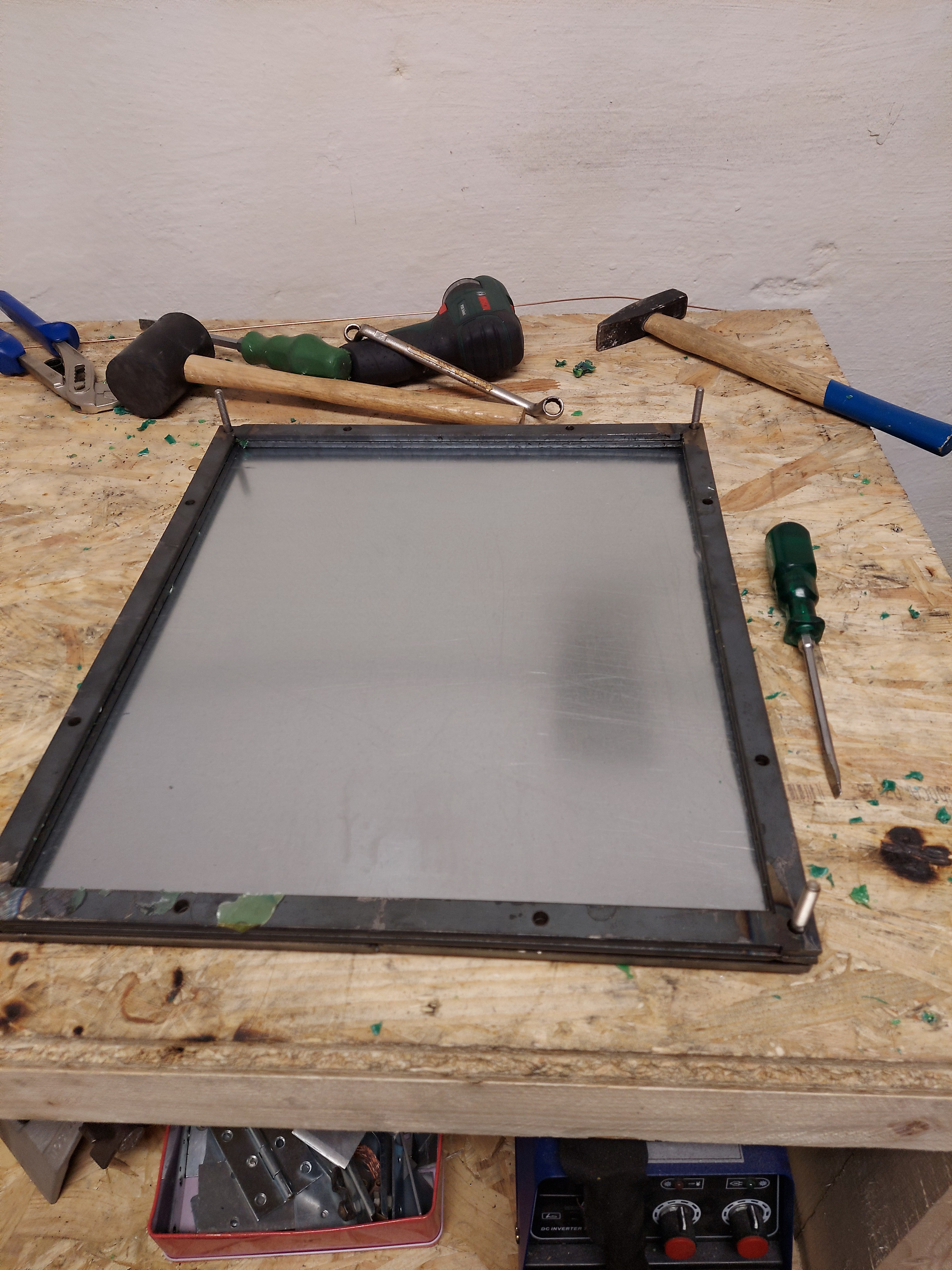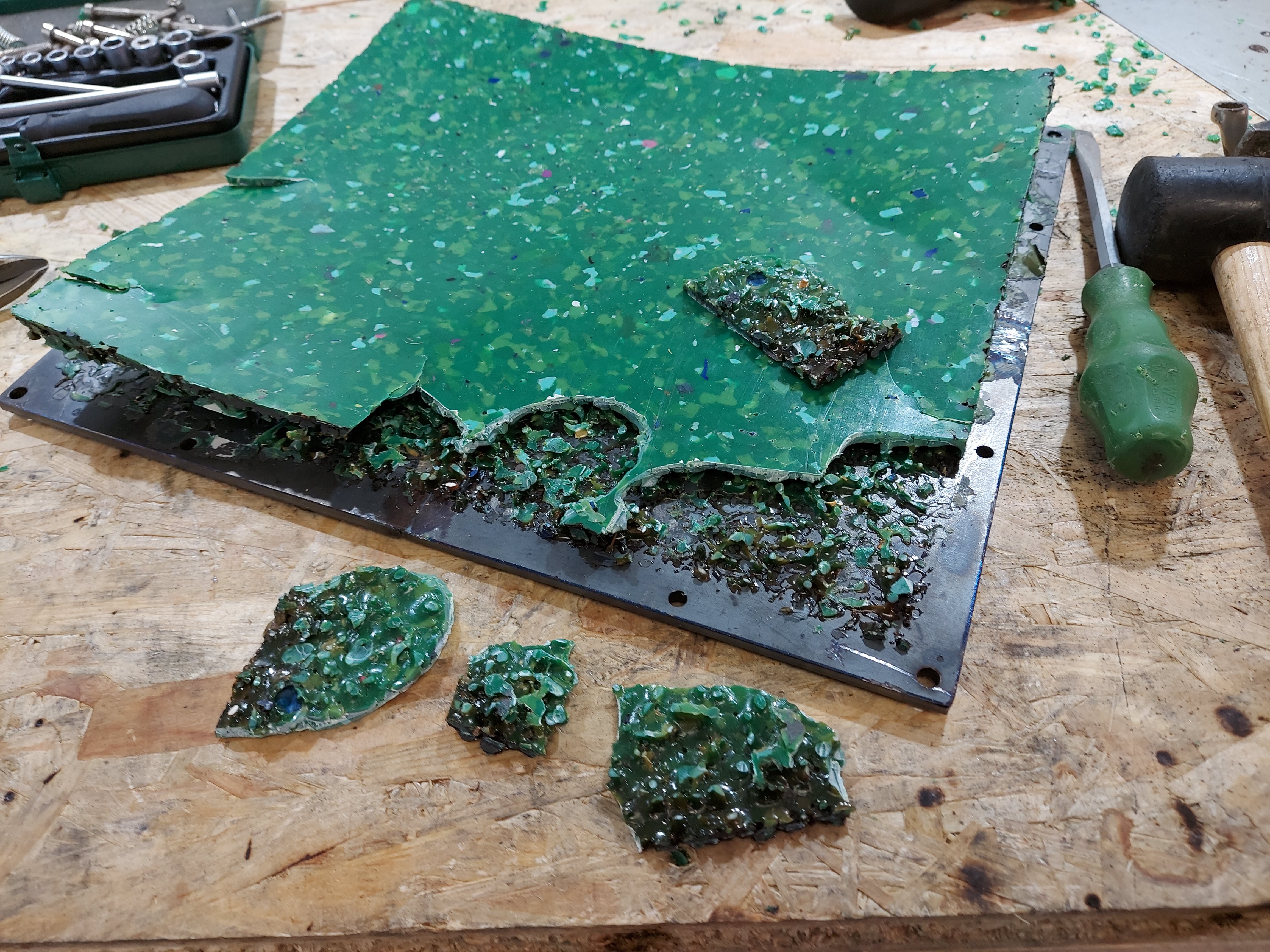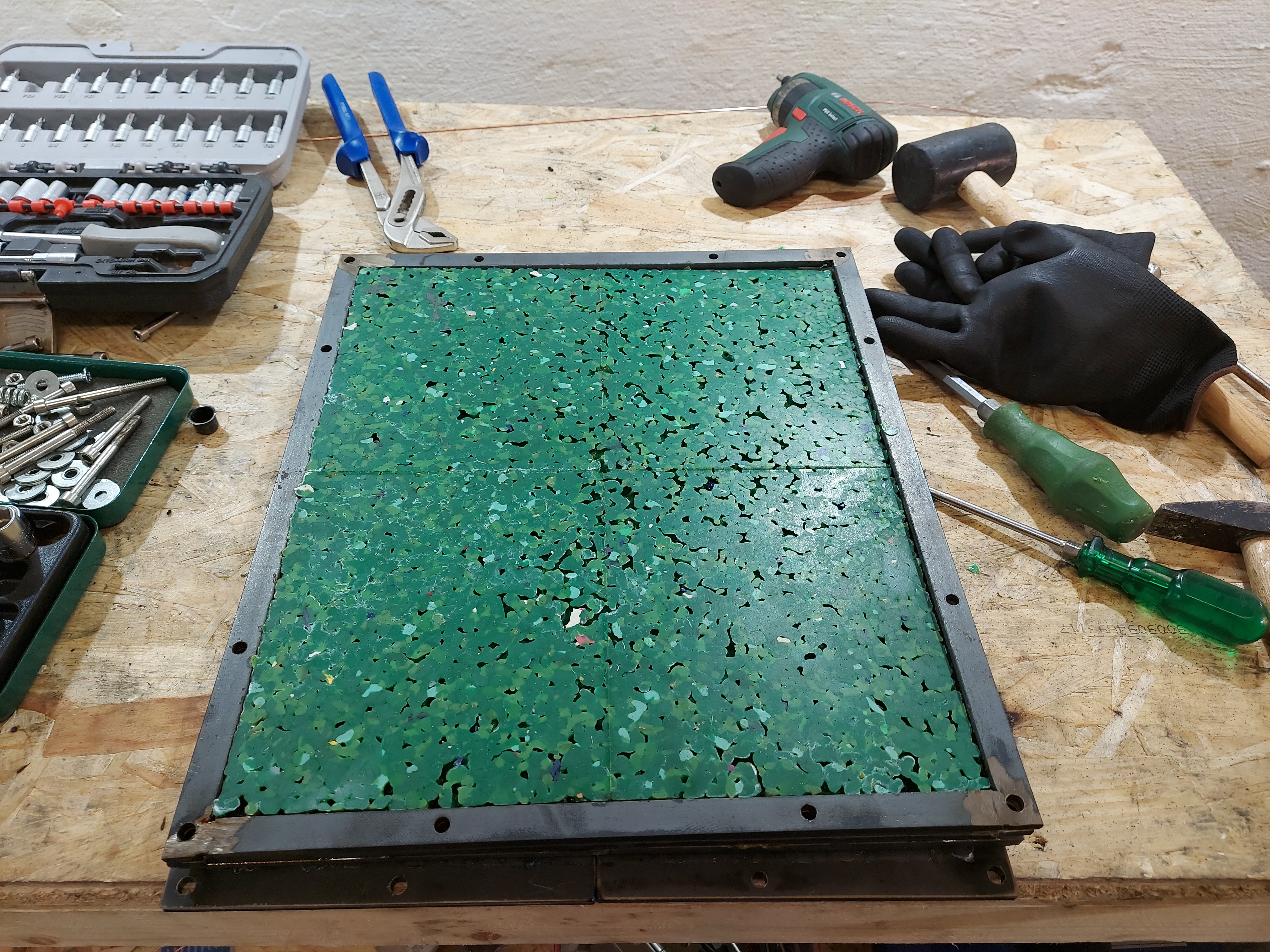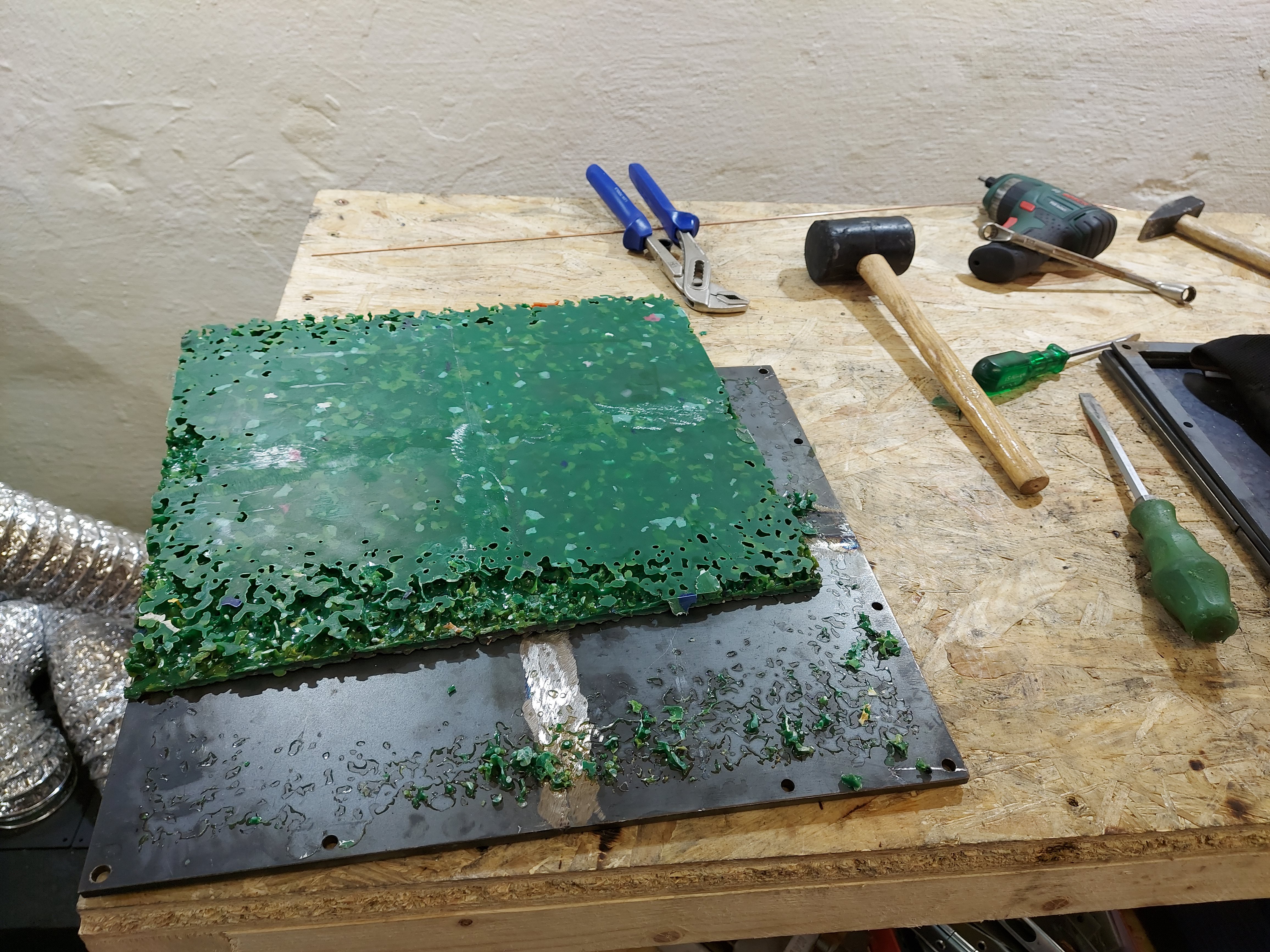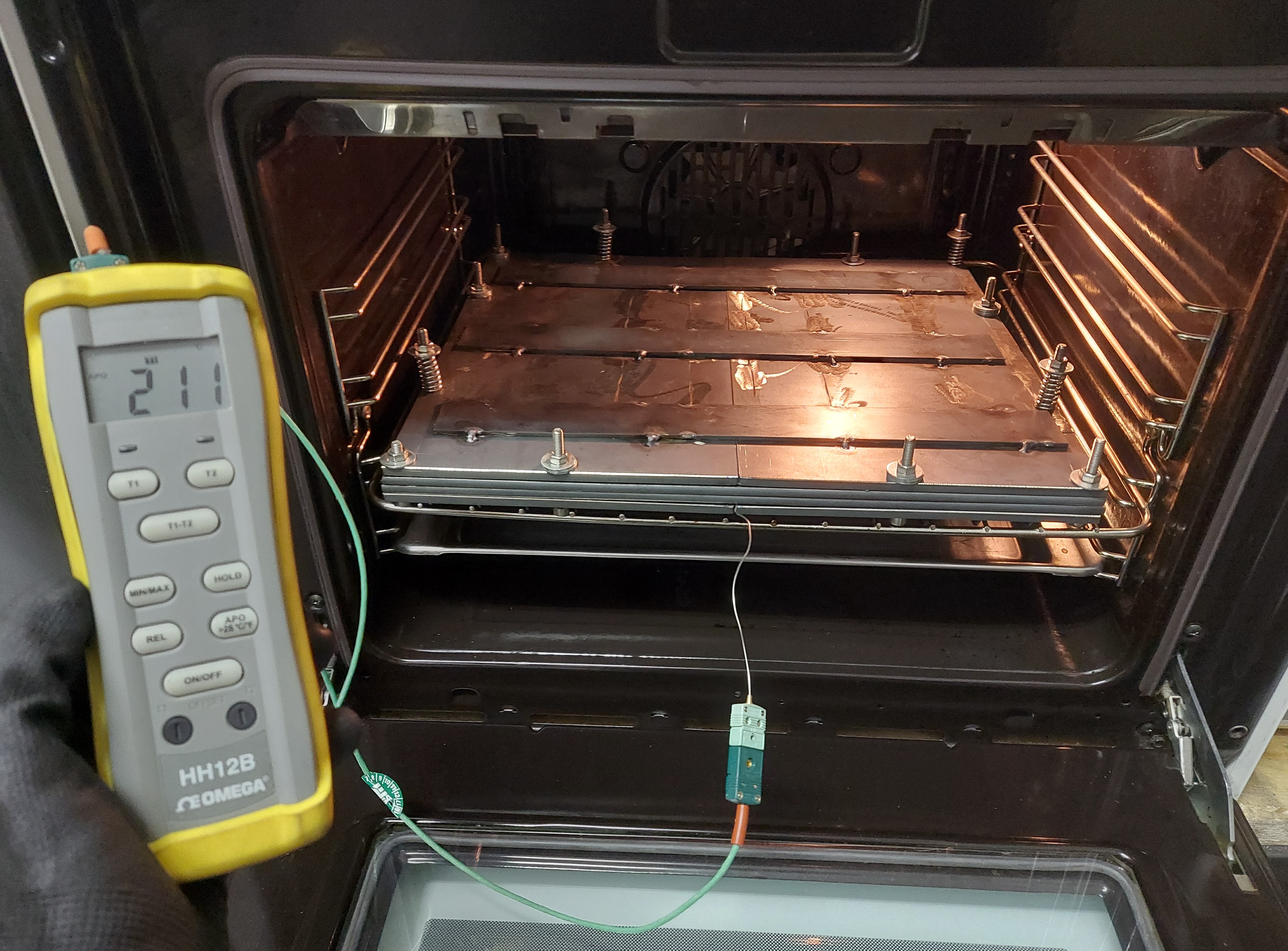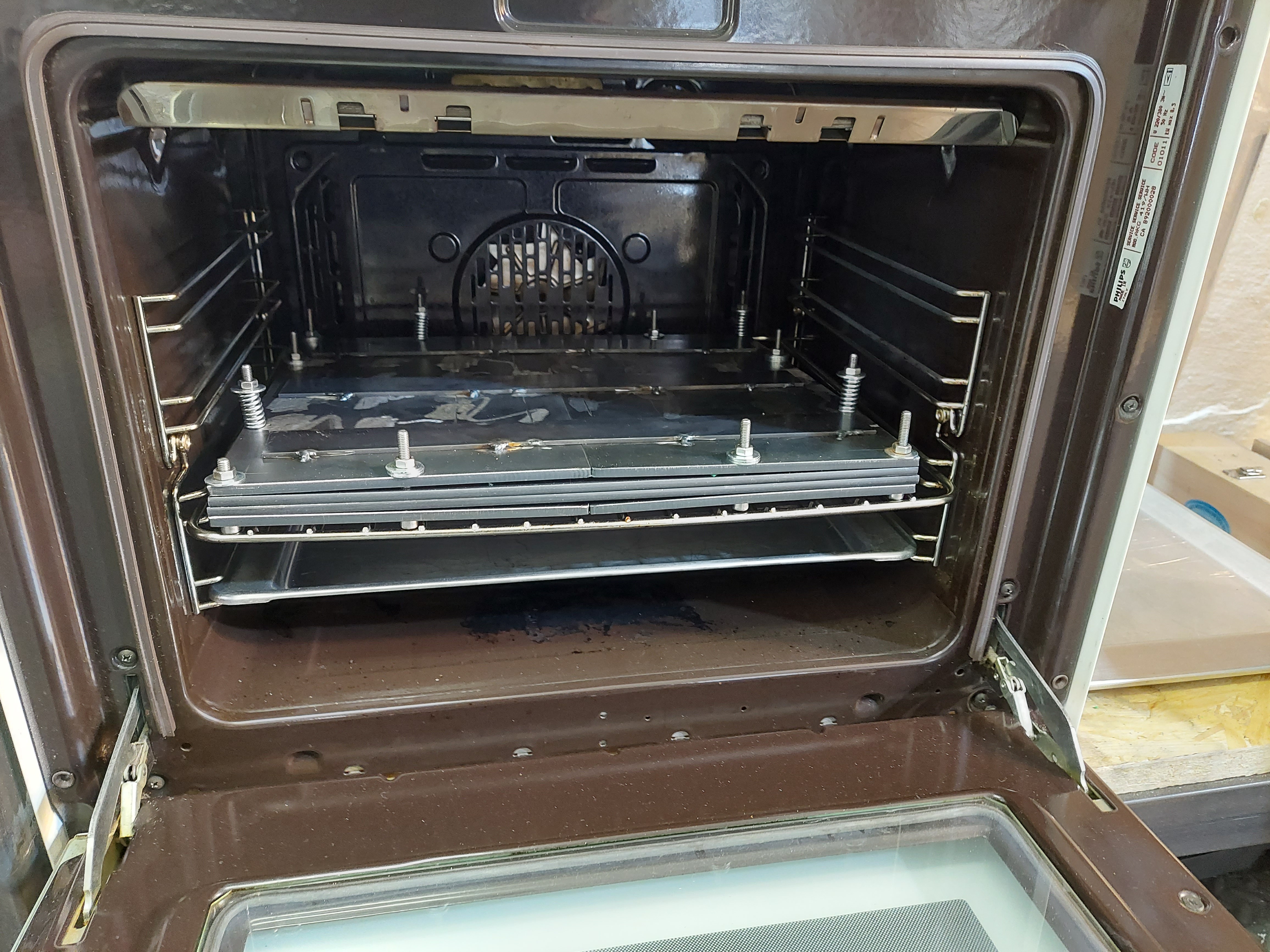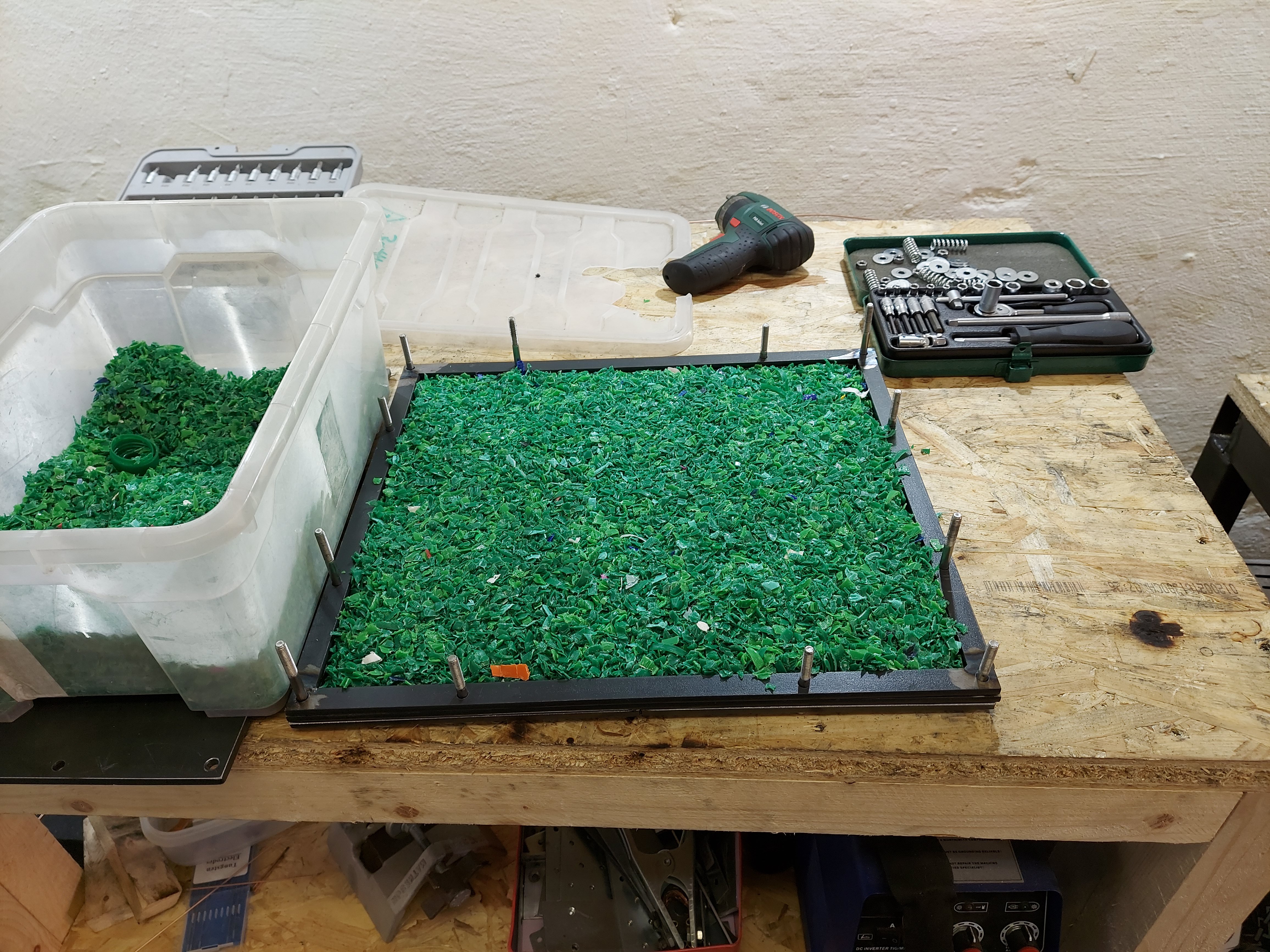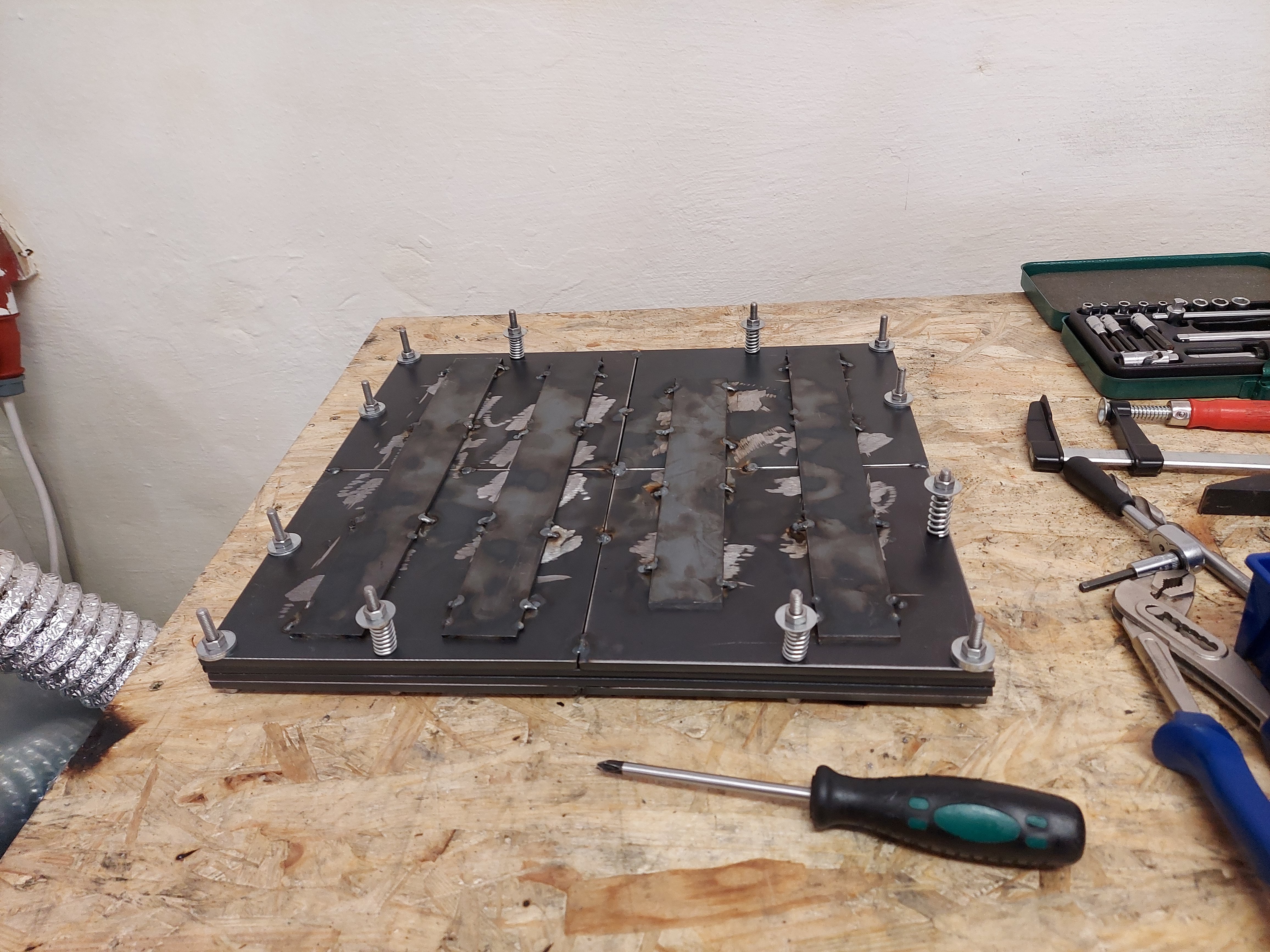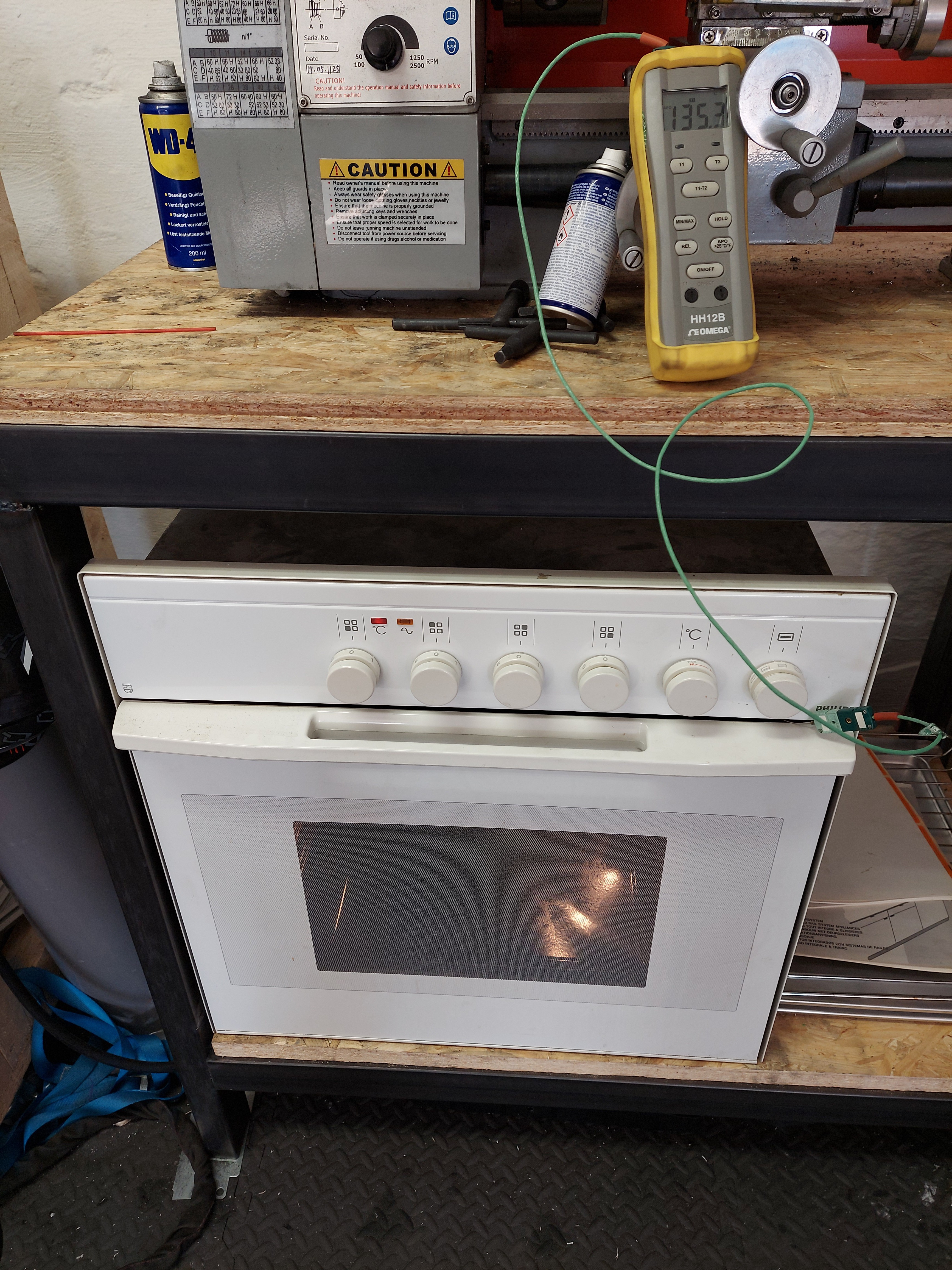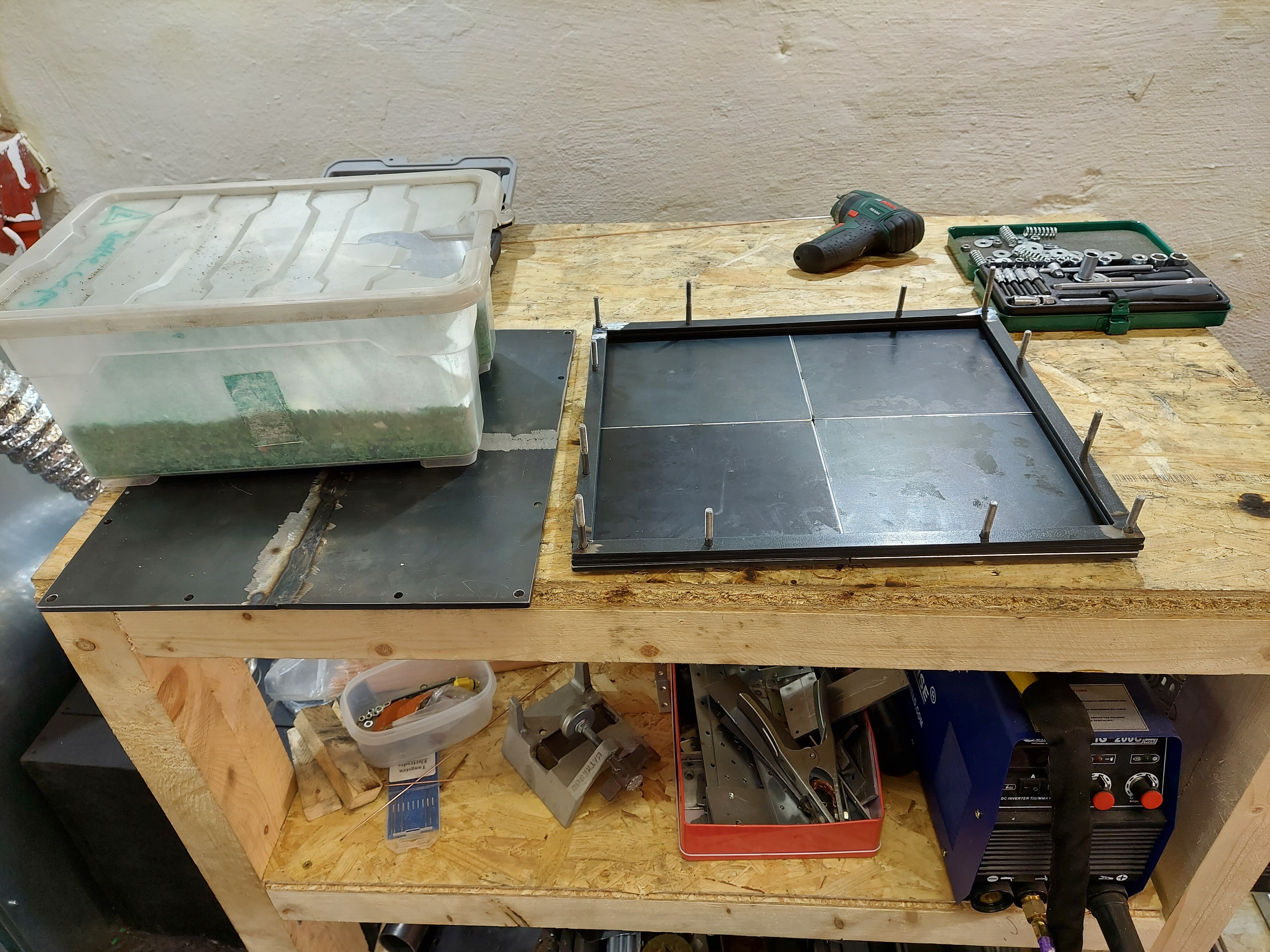-
Process Video
04/23/2021 at 03:58 • 0 comments -
Finished the Gen3
03/21/2021 at 17:08 • 0 commentsThe Gen3 is now a whole system for making several sheets in parallel. The design of the mold has noch much differences to the Gen2. Only the stainless steel is substituted by galvanized steel and the screws have fast change cut outs.
![]()
![]()
![]()
-
Gen2 Mold - Testrun with PE and ABS
01/29/2021 at 17:55 • 0 commentsThe Gen2 Form in combination with slicone spray works quite good, so I tested some more materials with it. As a result, ABS (black) and PE (green) worked well. Although the PE was melted the second time because I used cuttetd nIO Plates from the Gen1 trials
![]()
![]()
![]()
![]()
![]()
-
Gen2 Form: PLA Testrun
01/23/2021 at 16:45 • 0 commentsThe Gen2 mold works good. It is easy to fill and the combo of silicone spray and V4A, makes it easy to unmold. Tests with PLA have been difficult, because it tends to crack. Playing with the amount of flakes and temperature brought no better results. We will move on with other materials.
![]()
![]()
![]()
![]()
![]()
![]()
![]()
![]()
-
Gen2 Mold
01/05/2021 at 06:17 • 0 commentsThe first mold works, but it is costly to manufacture and relatively heavy due to the welded construction made of mild steel. In addition, fixing the frame and lid via 12 screws is not always that easy. The new approach does not require any welding at all. Instead of individual plates, a large stainless steel plate is now used for the base and lid, which we received last year from a household / workshop liquidation. The frame elements are sawn from simple aluminum profiles and screwed to the plate by drill holes. This form is again scalable, in which simply several frame elements can be arranged on top of each other. Pressing pressure is also generated in this form by pretensioned springs.
![]()
![]()
![]()
![]()
![]()
![]()
![]()
-
Success @ 4th try
01/03/2021 at 16:04 • 0 commentsjiha, I finally managed to make recycling sheets with a good surface on both sides which are easy to remove from the mold. So weighing the material in andvance helps to get a good fillfactor. I just multiplied the mold volume with the density of the material and added 10% safety. Worked out well.
Got a big Flake-hill on my mold with the 5-8mm flakes. Smaller ones should work better.
![]()
![]()
![]()
![]()
![]()
![]()
-
Finished the third try
01/01/2021 at 09:47 • 0 commentsokay, equipped both sides with thin galvanized metal sheets and rubbed them with silicon oil. Also lowered the temperature to 200 degree, the baking time to 1,5 hours and place a small indicator sheet with flakes on the mold to get an impression of the melting process.
This solution worked well, the plasticsheet was easy to remove and the surface of side 1 was very good. Unfortuanetly the amount of flakes was not sufficient to fill the whole mold with molten plastic. So side 2 was not so nice and looked like small trees would come out of the surface.
Then.....Fourth try will be with weighing the needed plastic amount in advance. Stay tuned
![]()
![]()
![]()
![]()
![]()
![]()
-
Finished the Second Try
01/01/2021 at 09:32 • 0 commentsFor the second try I raised the baking time to 2 hours and added a thin metal sheet on one side of the mold to prevent the plastic from sticking onto the surface. This worked well, but unfortunately, I had only one side equipped with the metalsheed. So the material baked solid on the second side and it was very hard to remove it. Nevertheless the way to go is cleat for the third try....
![]()
![]()
![]()
![]()
-
Results of the first try
12/26/2020 at 12:21 • 0 commentsthe first sheet which was made with the mold. Not that bad but the process needs some major improvements. For the second run, the mold will be filled with more material and the baking time will be 2hours instead of one.
![]()
![]()
![]()
-
mould v 1.0
12/20/2020 at 15:54 • 0 commentsOkay friends, deassembled the large metal-profiles because they appeared to massive. And yes, the mold had a better look afterwards. But guess what happened when I filled it with plastic flakes and screwed it together ? The mold bended, but with continuing of the baking process, it got back in the original shape. So the first attemp to make it more stable was not that wrong. Anyway, I will go in the direction of a lighter Verison, to reduce the thermal mass and the baking time. So stay tuned
![]()
![]()
![]()
![]()
![]()
Making Plates out of Recycling Material
We run a Precious Plastic Workspace and want to expand our abilities to process plastic. This project is about making plastic sheets.
 DevLab.nrw
DevLab.nrw